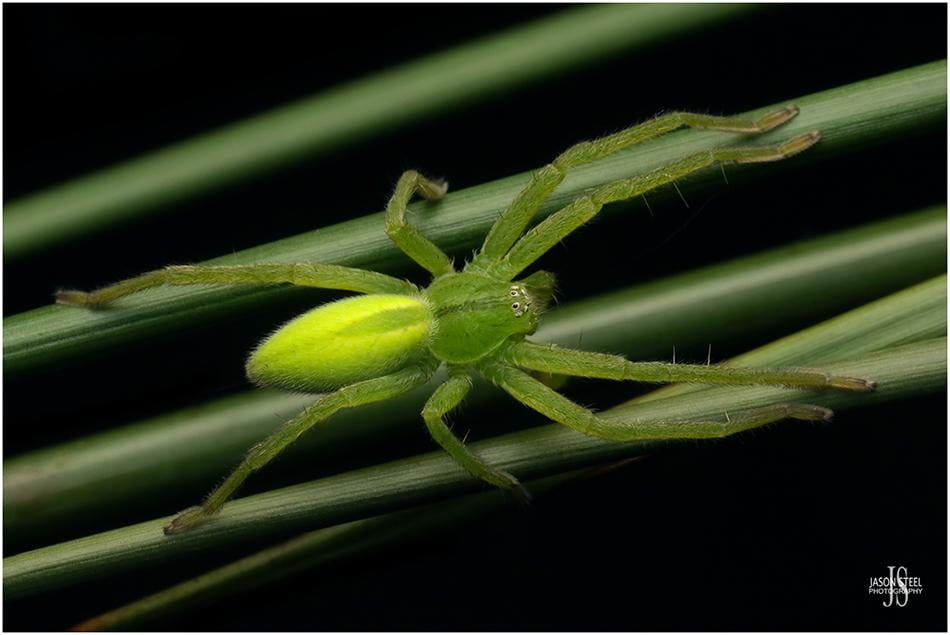
10mm sub-adult male Green Huntsman, Ashdown Forest, Sussex, 6th April 2025.
Green Huntsman - (Micrommata virescens)
The Green Huntsman is the UK's only Huntsman species Worldwide there are over 1380 species of Huntsman, split between 96 genera, within the family Sparassidae, formerly Heteropodidae. The Green Huntsman is a very striking and distinctive looking spider and shouldn't be confused with any other species in the UK, with the possible exception of maybe the Green Crab Spider, Diaea dorsata. Adult Green Huntsman grow to around 10-15mm in body-length, and the slightly smaller males typically reach about 7-10mm. This is a relatively slow growing spider and usually takes about 18 months to reach maturity.
Like other Huntsman species, from various other countries, the Green Huntsman does not build a web to catch its prey. Instead the Green Huntsman relies on its camouflage and it's speed to ambush its prey. The spider often waits motionless, head facing downwards, and waits for prey to come within range before moving at great speed to pounce on its victim. The Green Huntsman is also quite a competent jumper too and will use its jumping skills to pounce on prey, or to evade capture from predators. Sometimes the spider will patrol the foliage, looking for prey to slowly stalk up on, before launching an attack.
The Green Huntsman has a widespread but very scattered distribution in the southern half of the UK and is classed as a nationally scarce species in Britain. Even in areas where it is present it can still be very difficult to find.
Adult females are a very vivid green colour, with a slightly paler green abdomen. The adult males are also green in colour but are slightly darker in shade and not quite as bright green as the females. The abdomen of the male is a reddish-brown colour, with two longitudinal yellow stripes. Green Huntsman Spiders have eight small black eyes, positioned in an oval pattern, that are each encircled by a ring of short, white hairs.
Green Huntsman spiders are typically found in damp, sheltered woodland, where they seem to favour the lower branches of young oak trees, tall grass, large clumps of heather and sedge tussocks. Other habitats may include moorland, heathland, parks and occasionally gardens. In the summer females build a large retreat for their egg-sac, usually around 50cm above the ground, The retreat is made from small leaves, curled over and stitched together with silken threads. Oak tree saplings and other broad-leaved trees are regular choices for their retreat. Sometimes Bracken is used. A clutch of around 30-50 eggs is then deposited. The eggs are also bright green in colour and are bound together in a thin egg-sac covering, made of white silk, which the female guards without leaving her retreat to feed. After about 4 weeks the eggs hatch and the spiderlings remain within the retreat with the adult female until they are ready to disperse and fend for themselves. When the spiderlings first hatch they are also bright green in colour and look like tiny garden peas with legs. You can see fantastic photos of the newly hatch spiderlings with the adult female here: SPIDERLINGS 1 SPIDERLINGS 2 SPIDERLINGS 3
This green colouration of the new spiderlings doesn't last though and juvenile specimens are generally a light tan colour, brown, yellowish-green or greenish-brown. They can also have reddish brown stripes on the abdomen and carapace, and reddish-brown spots on the legs and palps too. As the juveniles grow they will once again take on the green colouration, associated with the adults, as they near maturity. Occasionally some specimens can retain this reddish-brown colouration right up until maturity, and occasionally even through to maturity as well. See colourful sub-adult specimen here. Adults can normally be found from April through to October, with May to August being the best months for females, and May to June for males.
There are also two very similar, and closely related Green Huntsman species in Europe, Micrommata ligurina and Micrommata formosa, which are not found in the UK, but are found in parts of the Mediterranean and southern Europe, North Africa and parts of the Middle-East. Micrommata ligurina sometimes finds its way into the UK as an accidental import, hidden amidst imported plants, fruit or vegetables. One such example turned up on the outside of a residential house in Sidmouth, Devon on February 14th 2023. - LINK. An adult female specimen turned up in Wales on 29th March 2023, inside a bag of mixed fruit, containing strawberries, raspberries and blueberries, grown in Mexico and Portugal. - LINK
Micrommata ligurina and Micrommata formosa can both be distinguished from our native Micrommata virescens by the presence of a small black dot near the centre of their carapace. Juvenile specimens are usually a sandy or tan colour. Whilst adults are usually vivid green they can also sometimes be found in this light brown colouration as well. LINK 1 LINK 2. In its native countries Micrommata ligurina is sometimes known as the Green Grass Spider, or the Green Prairie Spider.
Micrommata formosa often exhibits a dark median line on the dorsal face of the prosoma, which looks like a continuation of the dark abdominal line. This species is variable in colour and it's not unusual for Micrommata formosa to remain brown in colour even through to maturity. Micrommata formosa and Micrommata ligurina are slightly smaller than our native Micrommata virescens, with male Micrommata formosa typically reaching 6.5 - 8mm in body-length and the females typically reaching 9 - 12.5mm. - LINK
Male Micrommata ligurina typically reach 8mm in body-length and the females typically reaching 10mm. - LINK
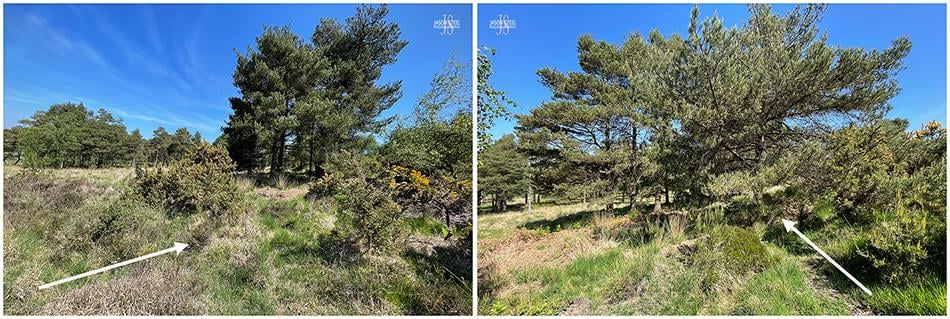
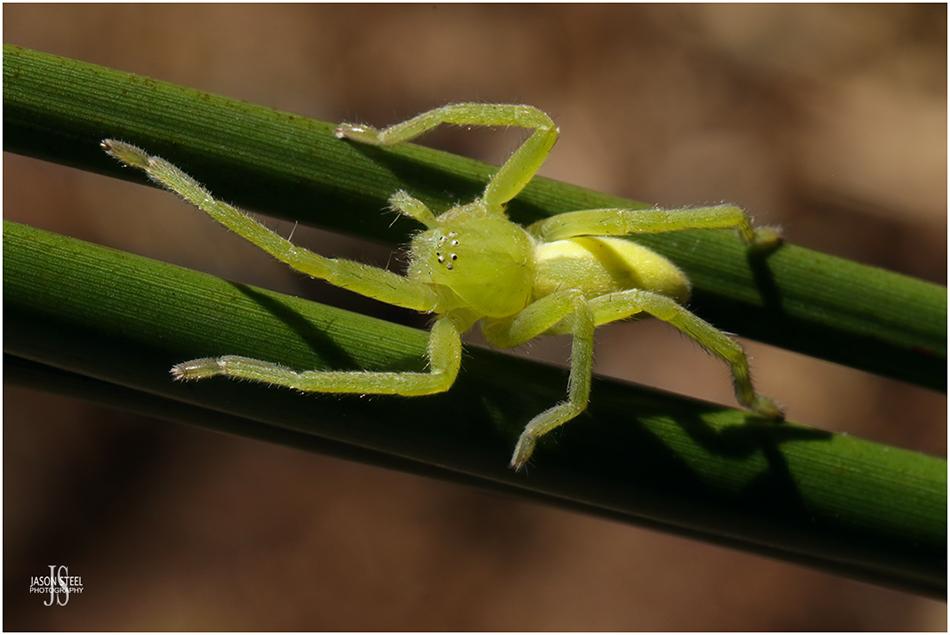
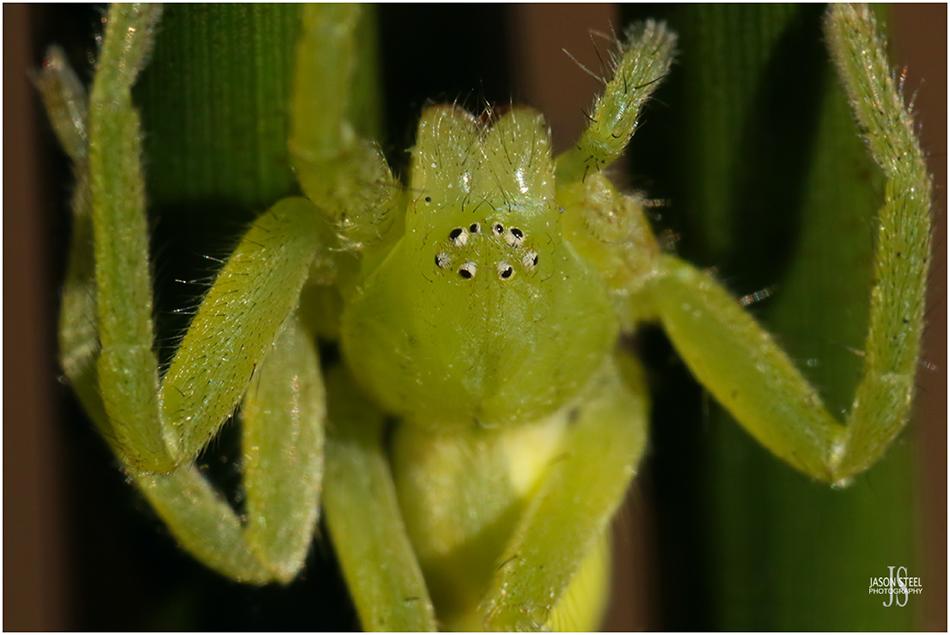
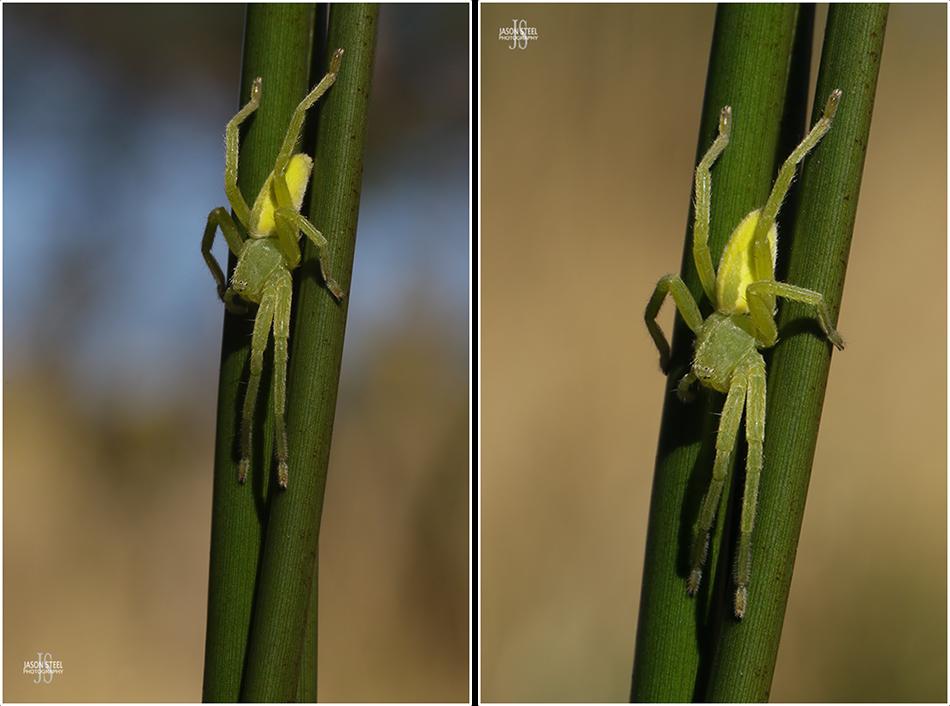
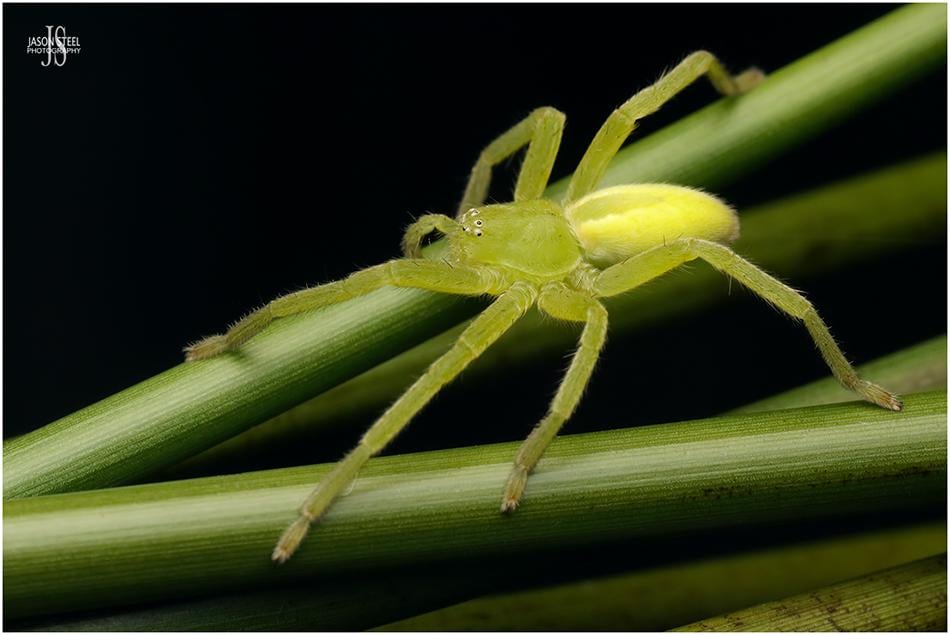
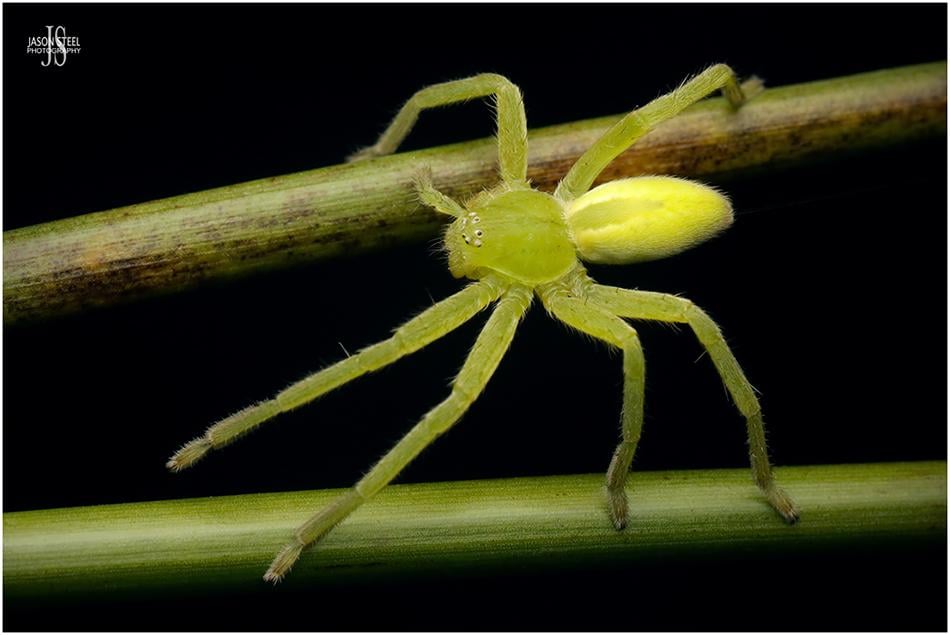

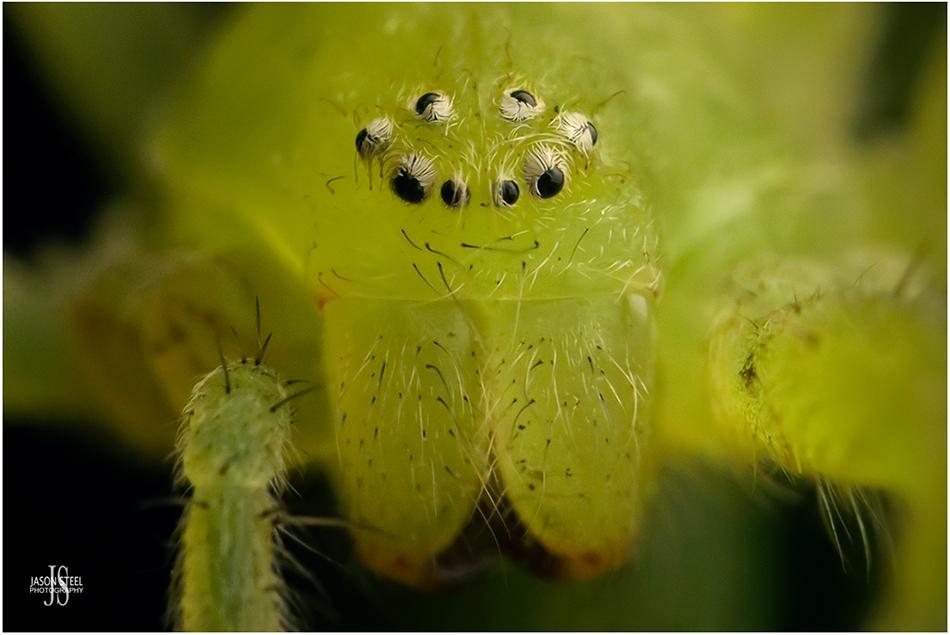
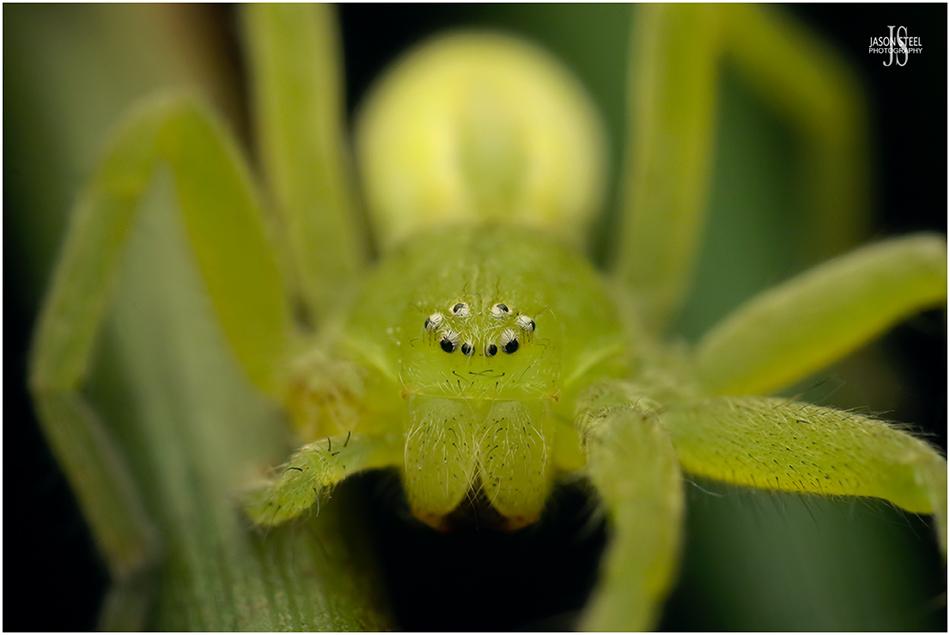
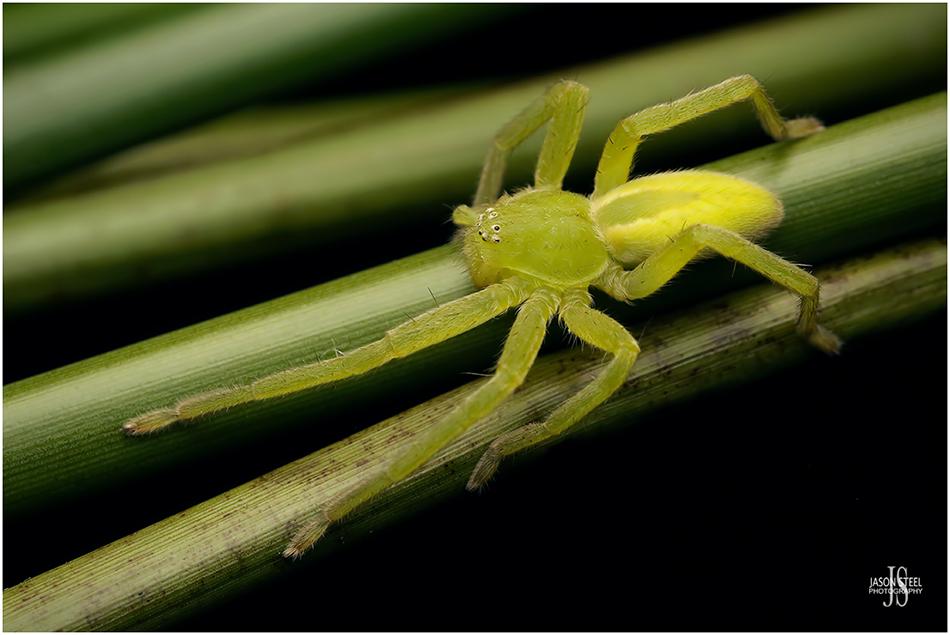
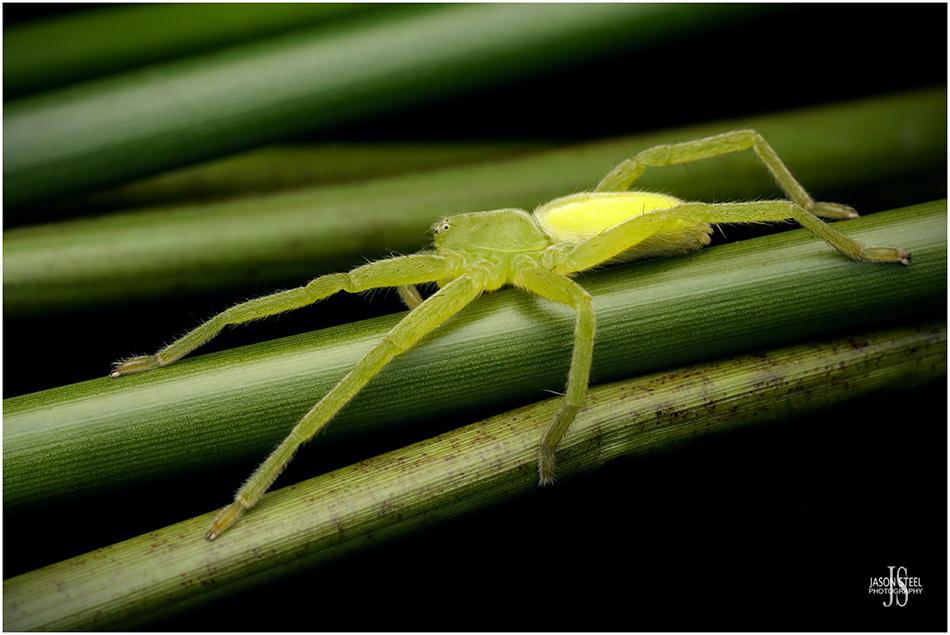
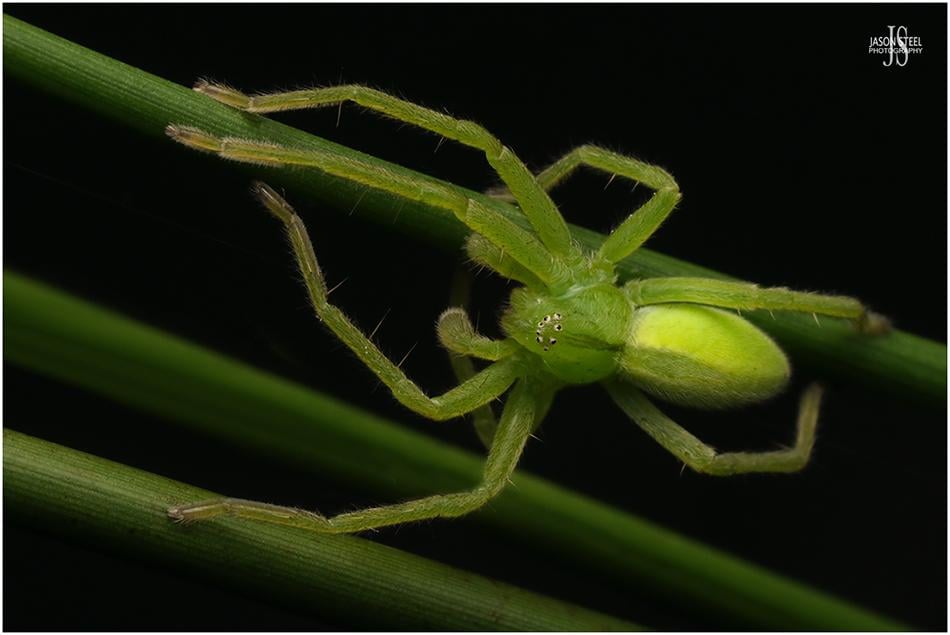
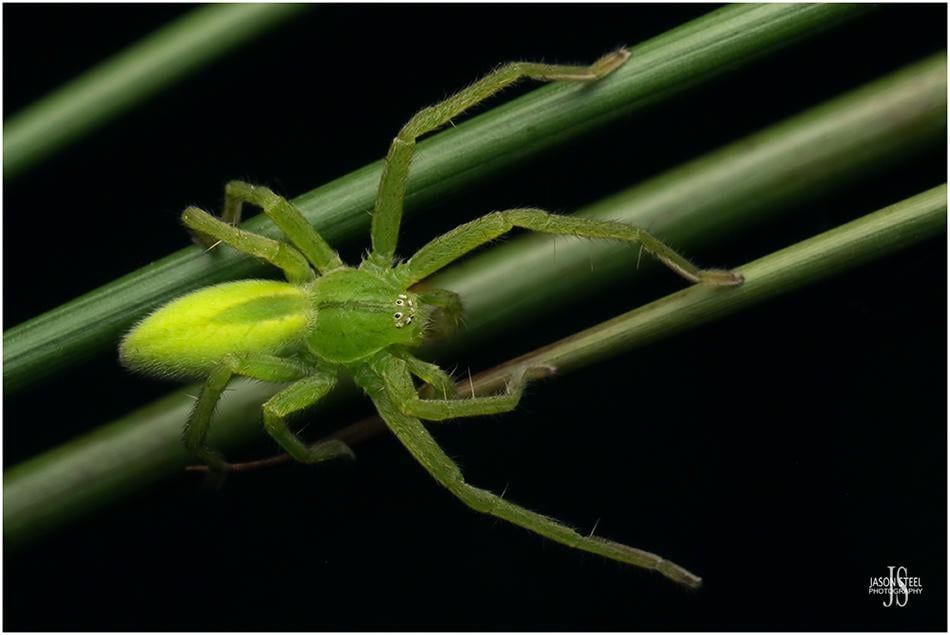

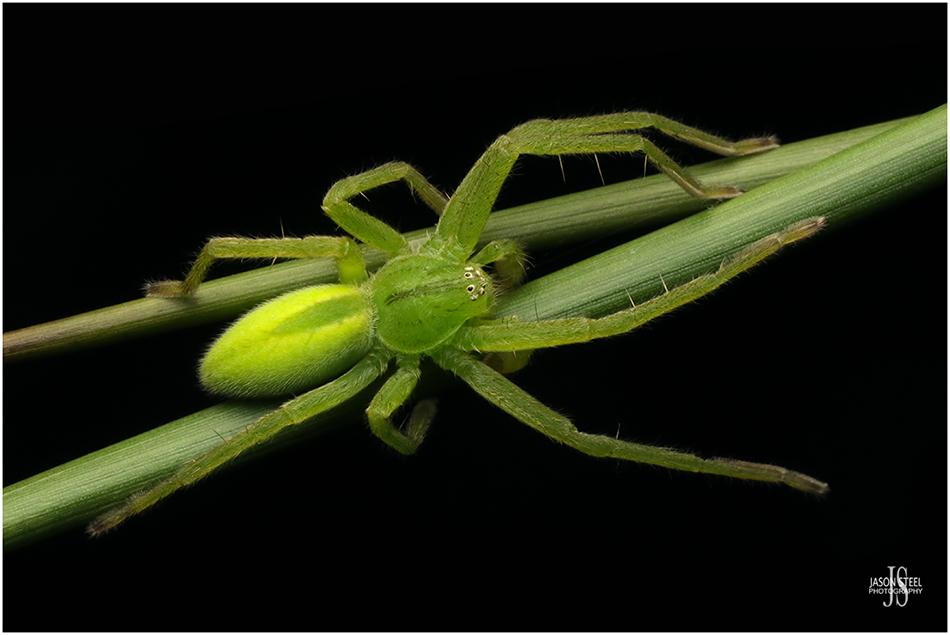
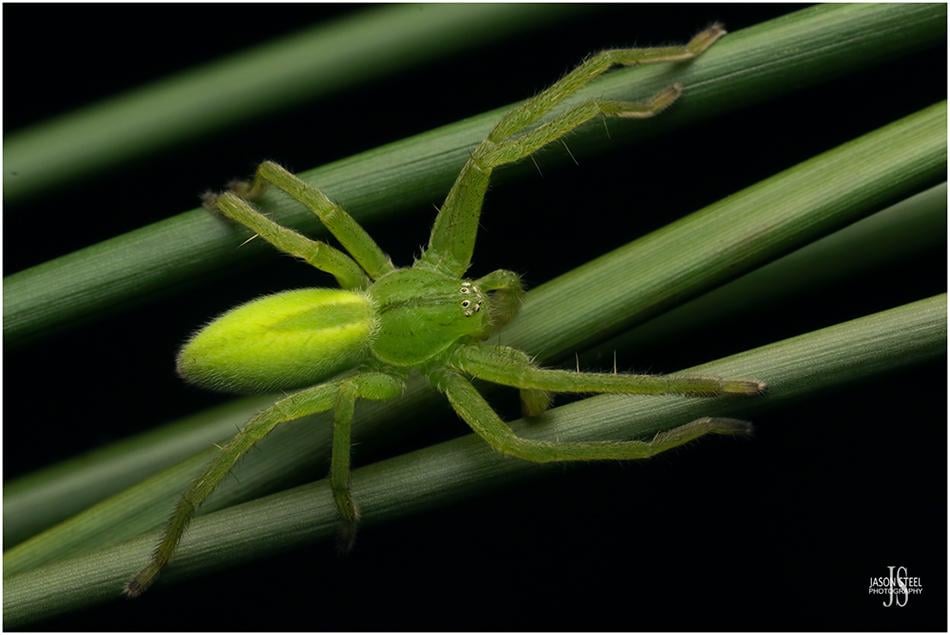
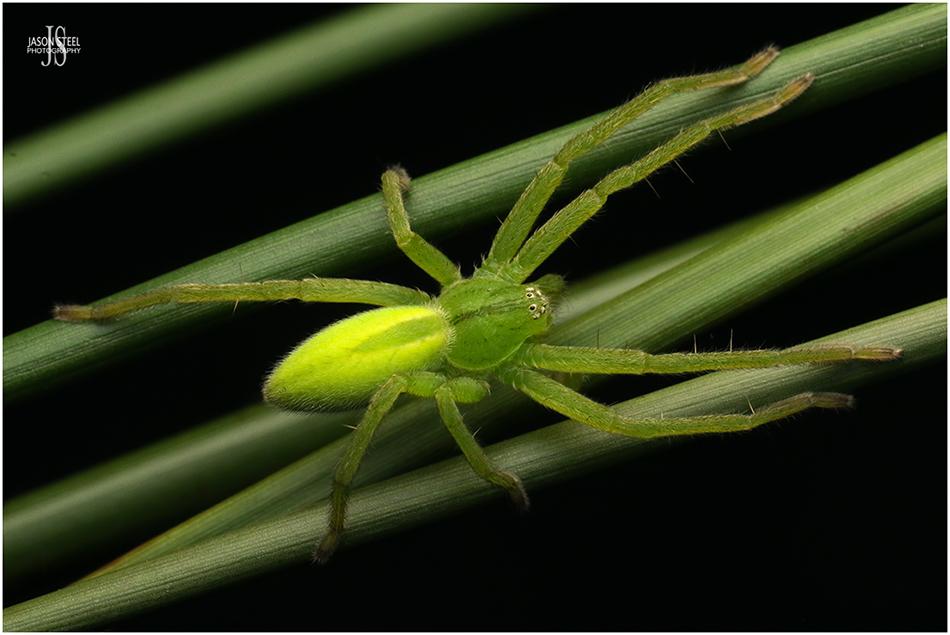
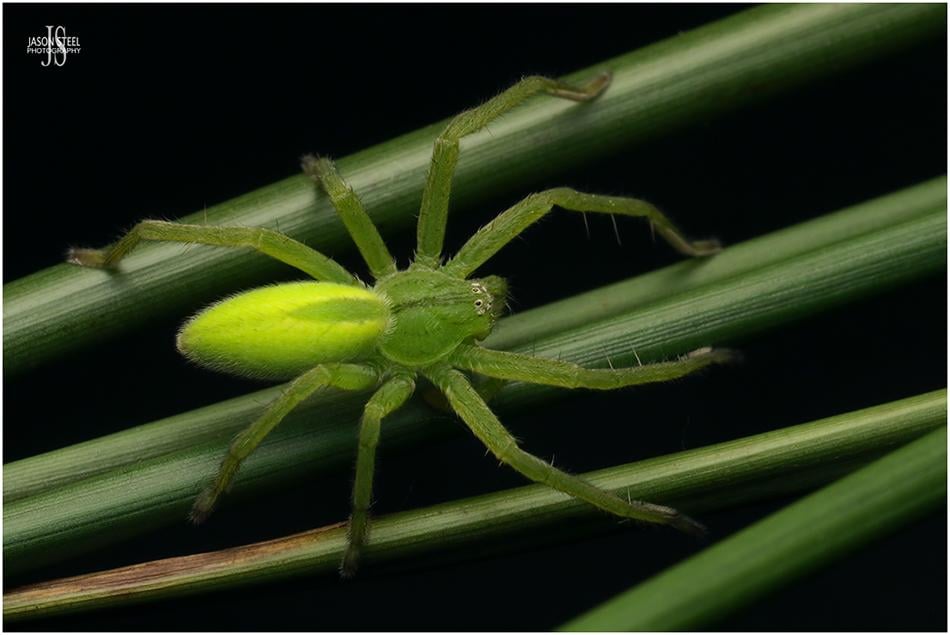

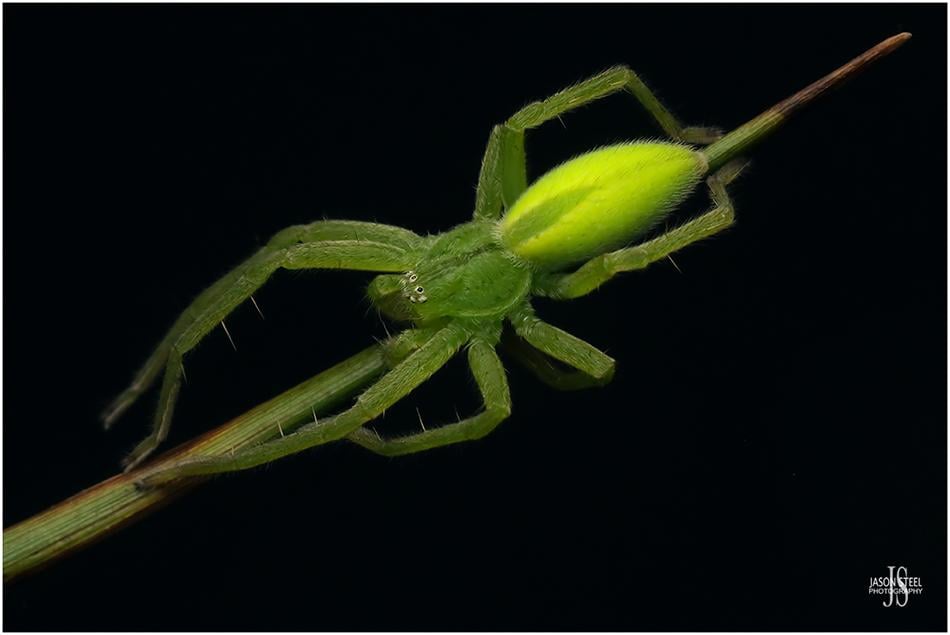
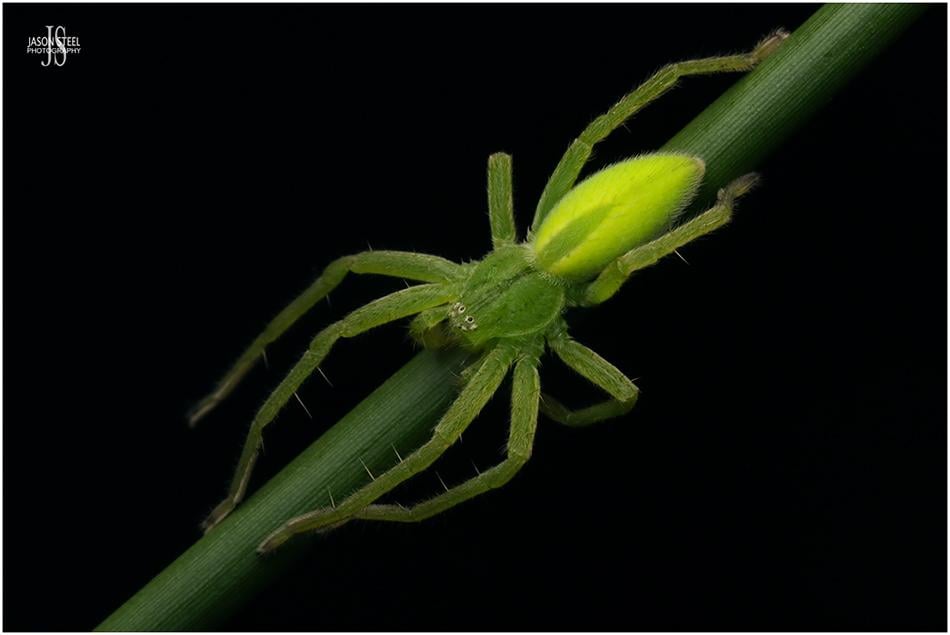
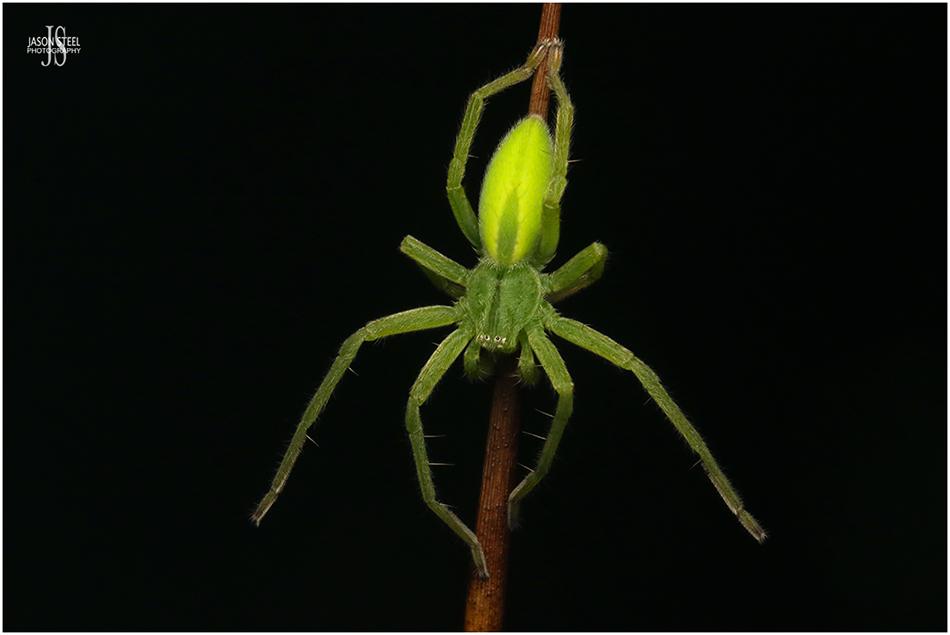
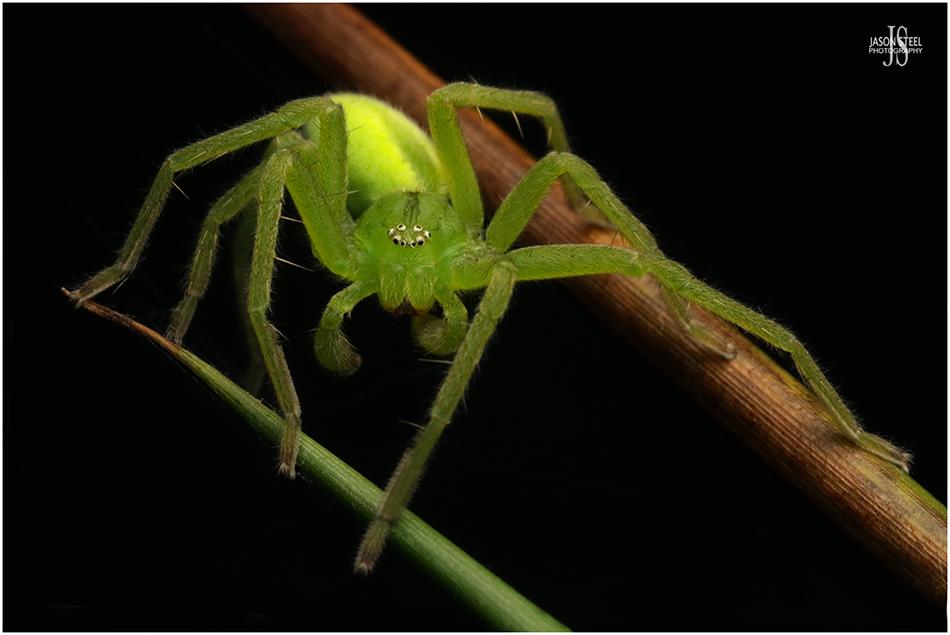
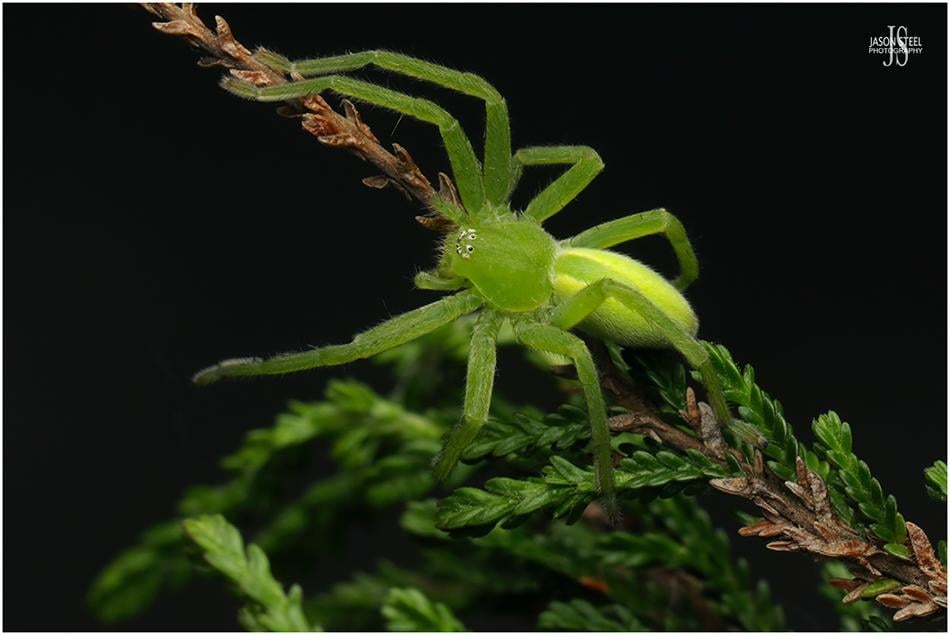

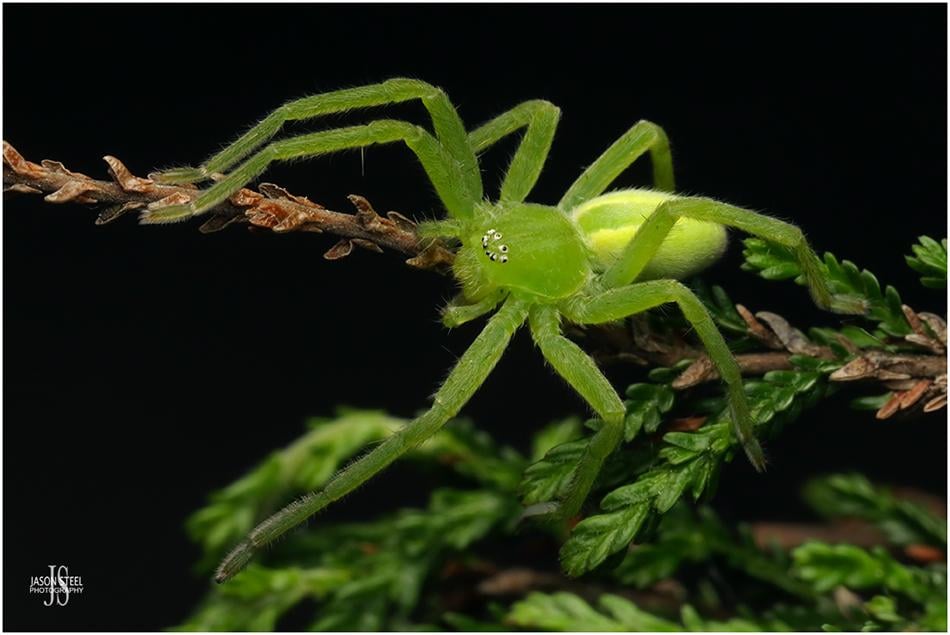
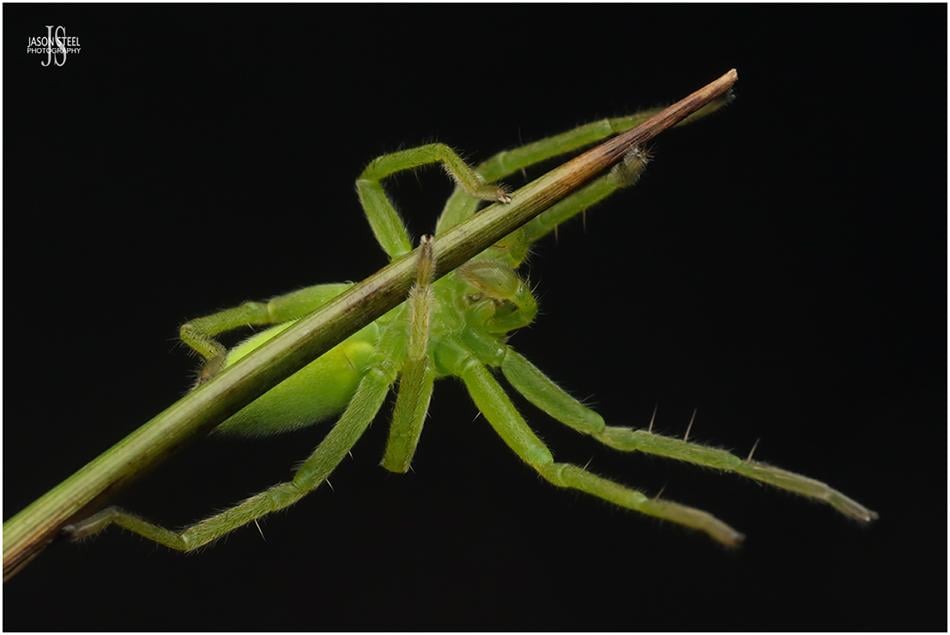
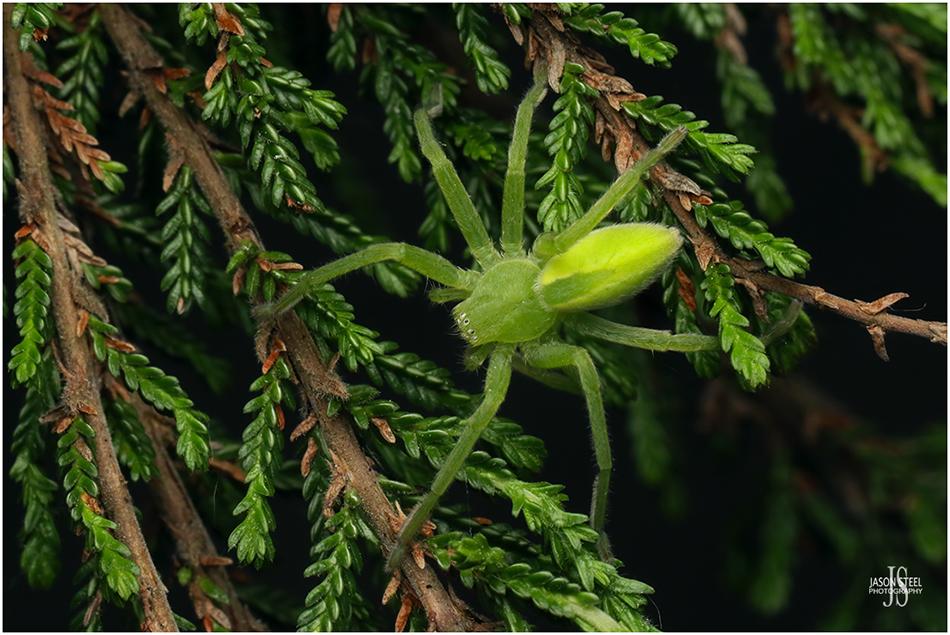
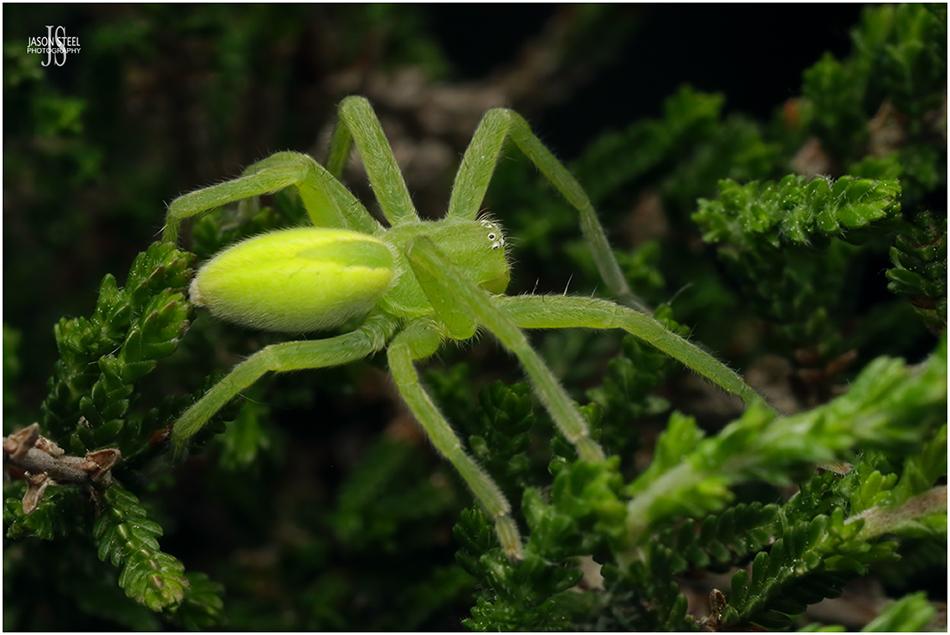

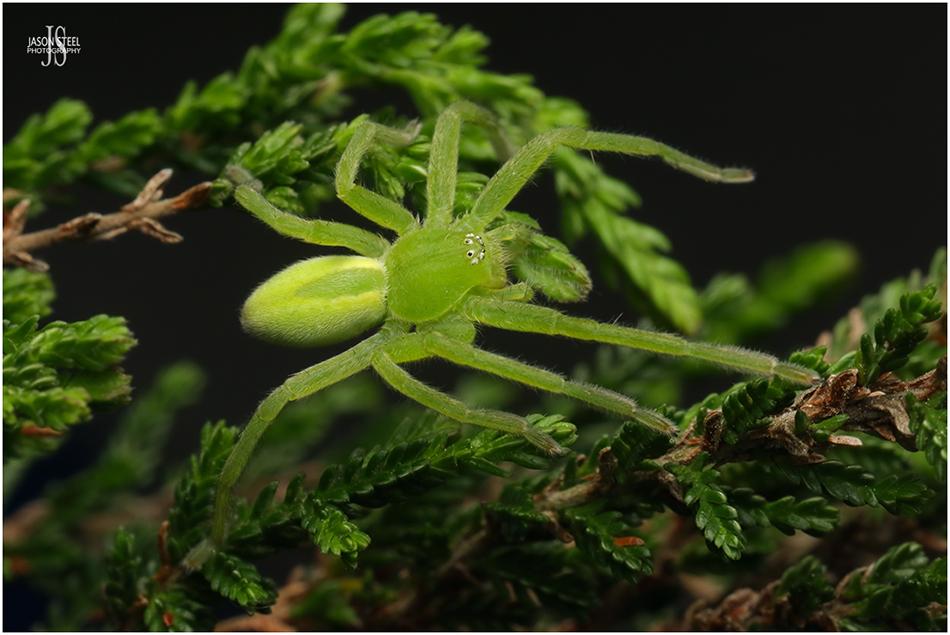
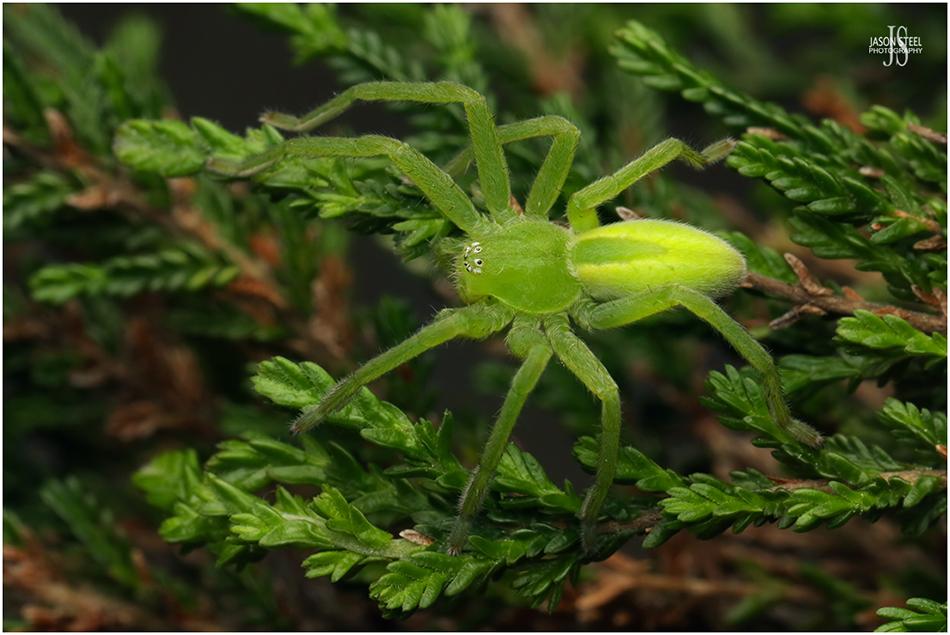


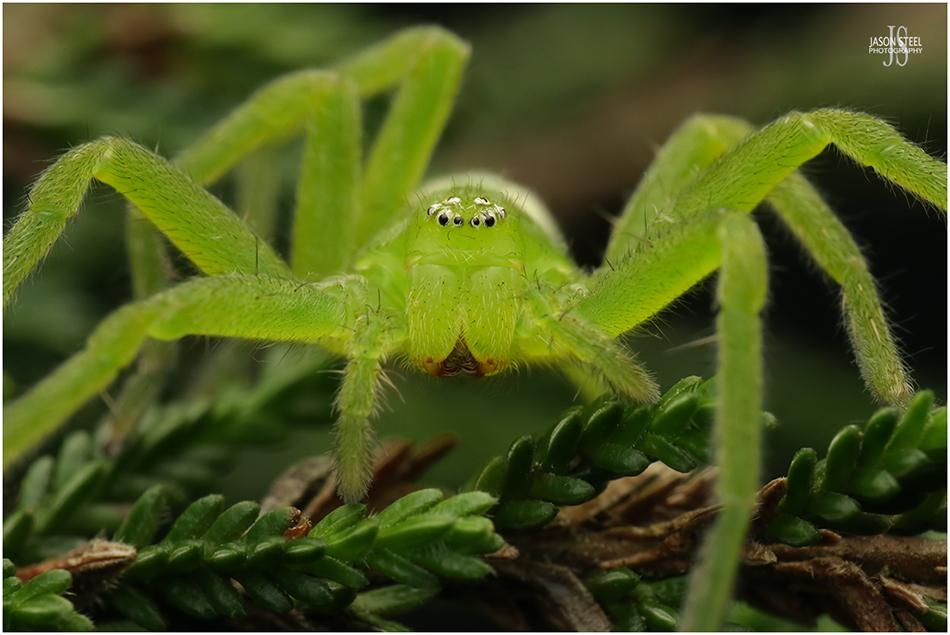
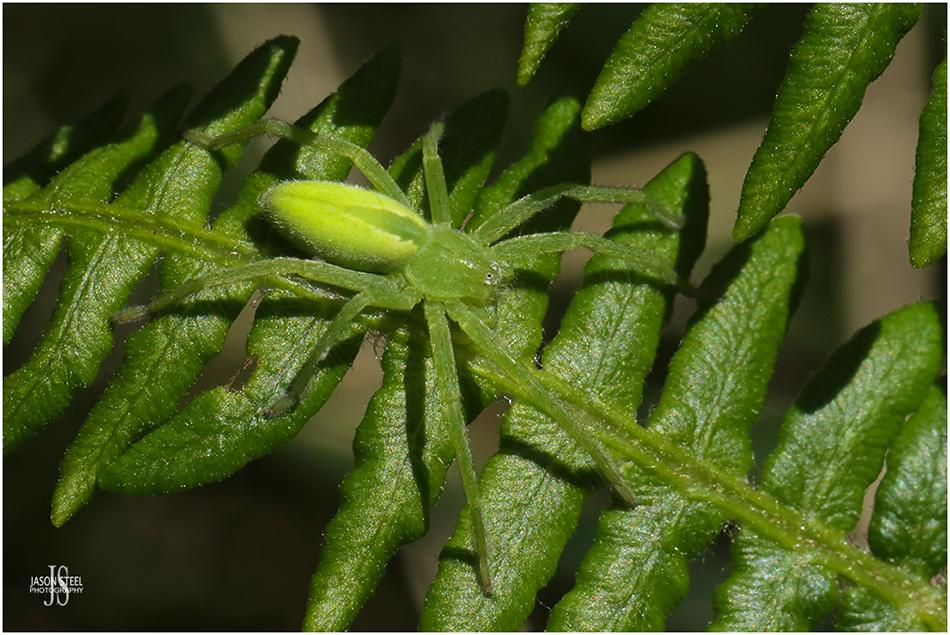
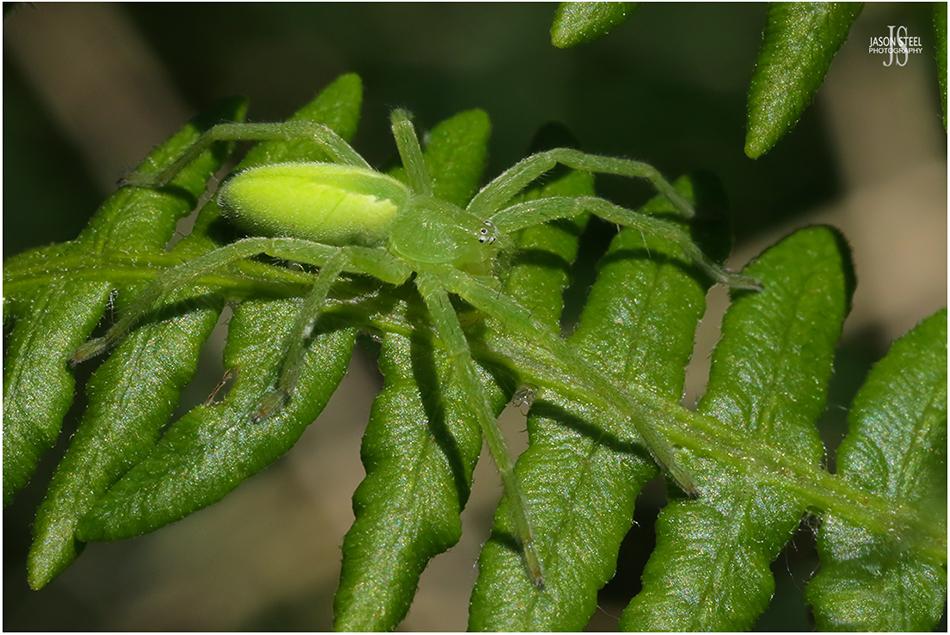
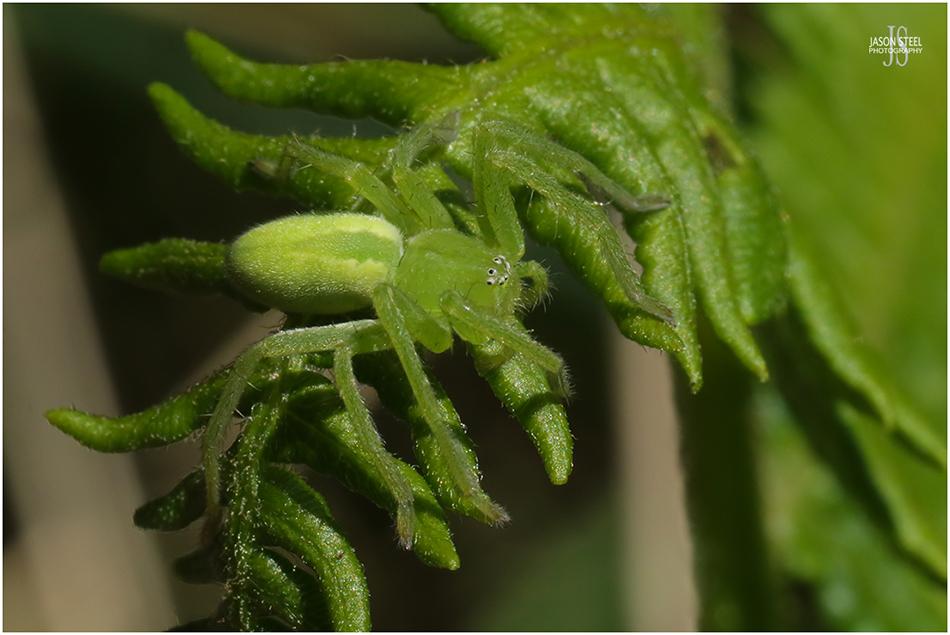
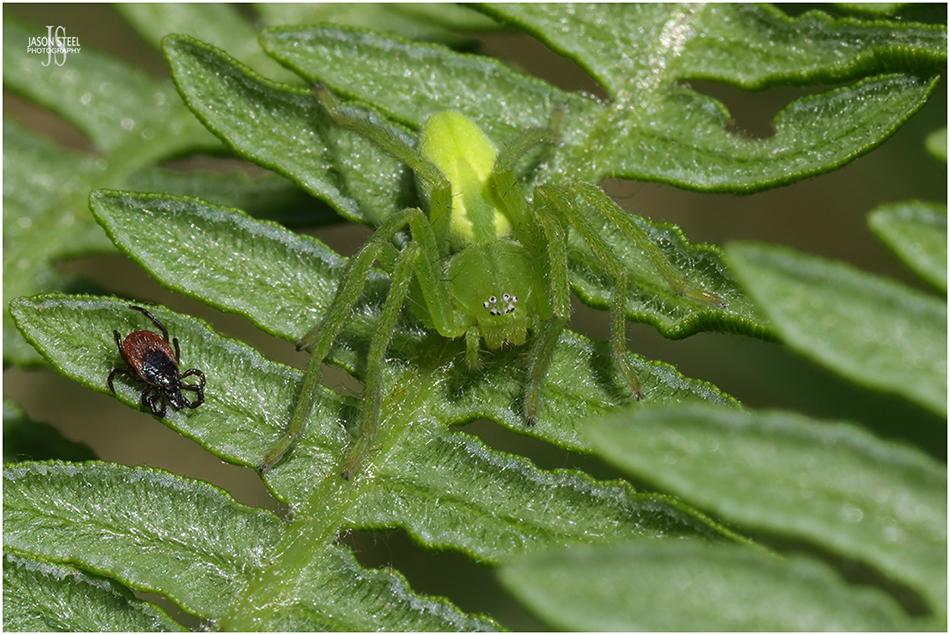

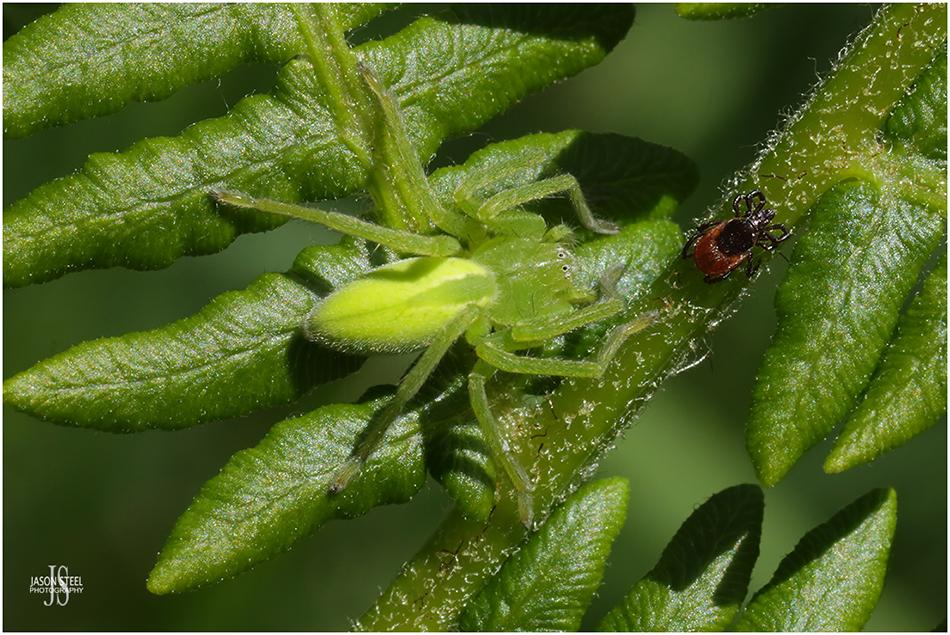
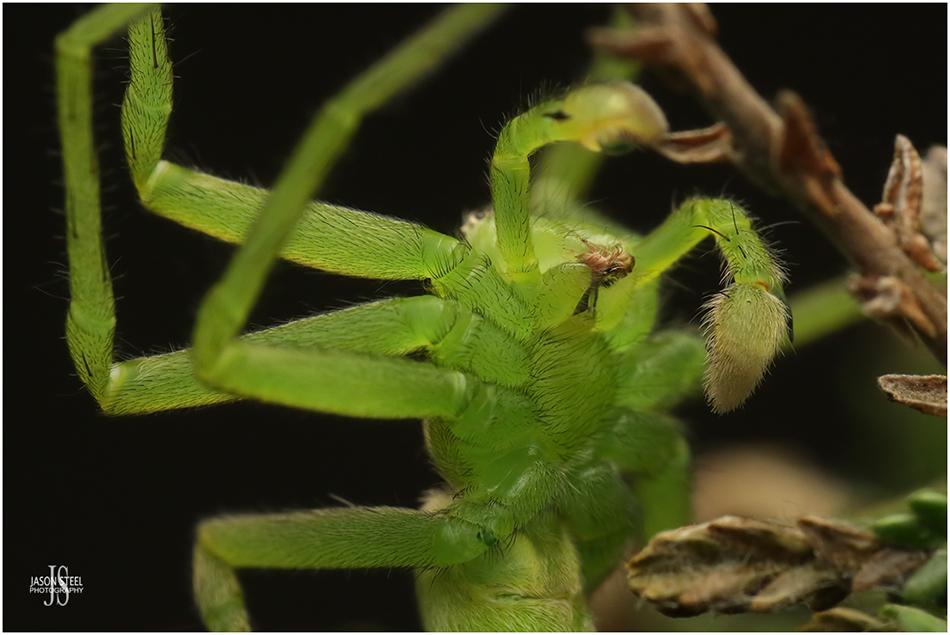
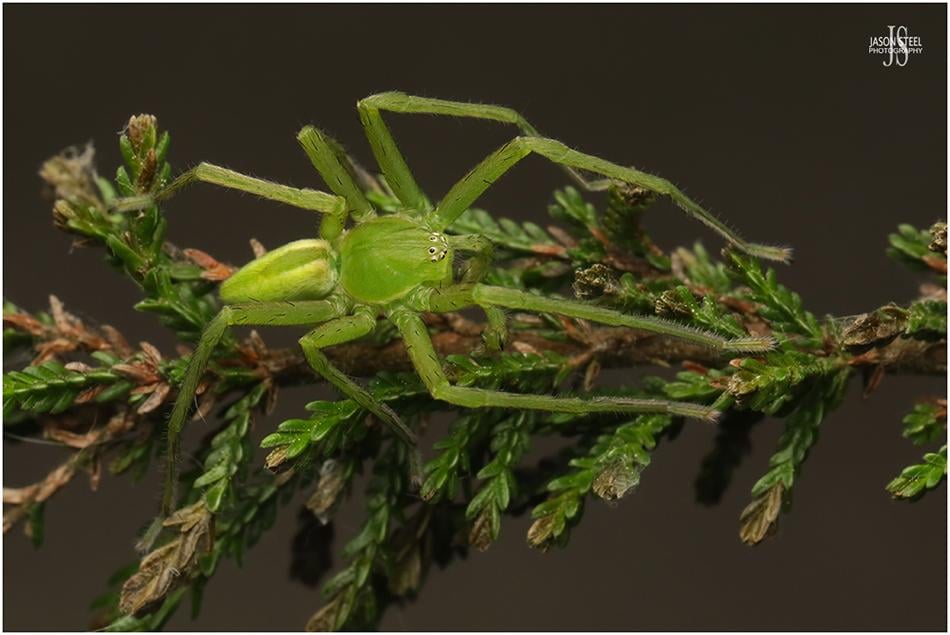
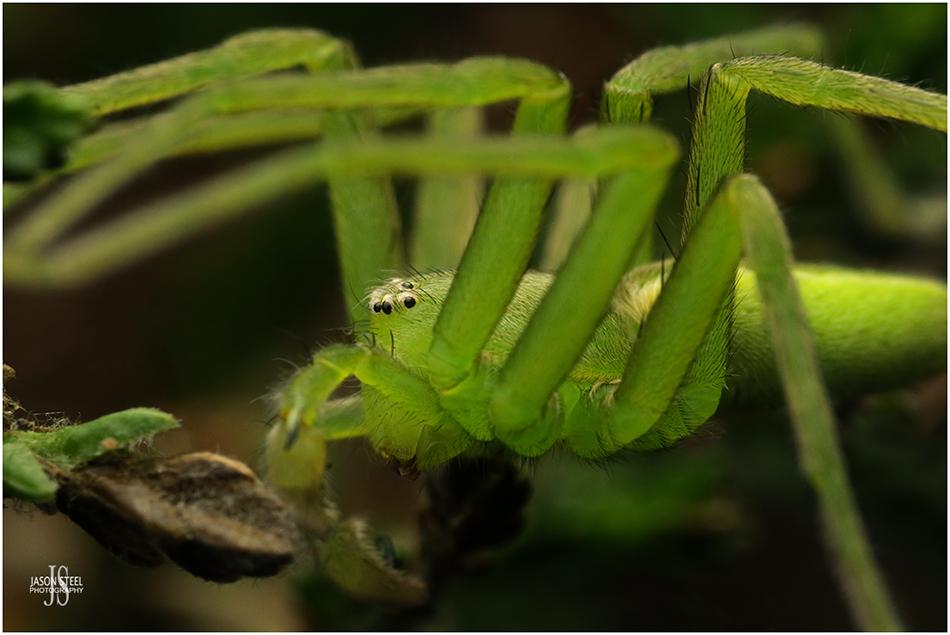
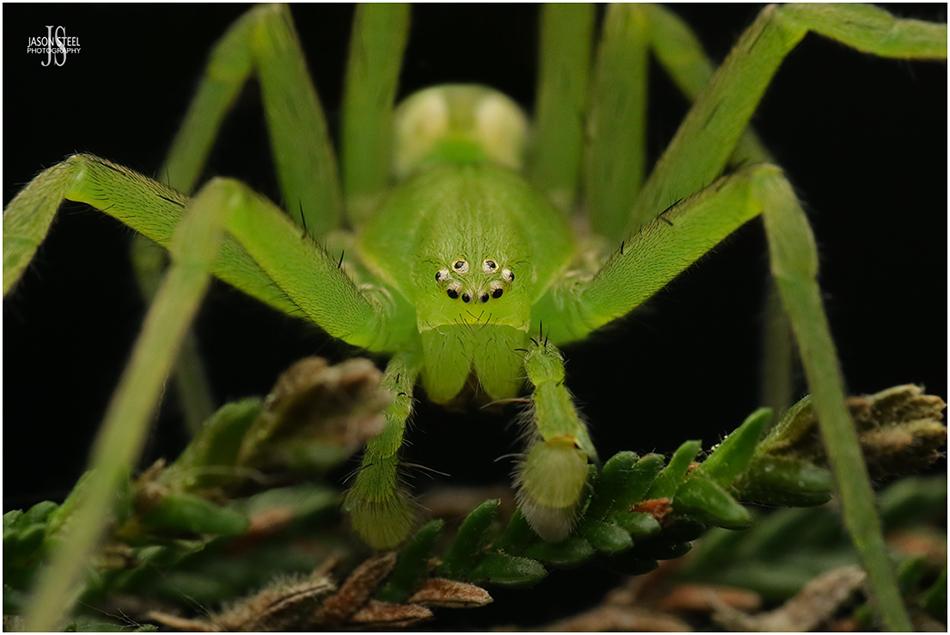
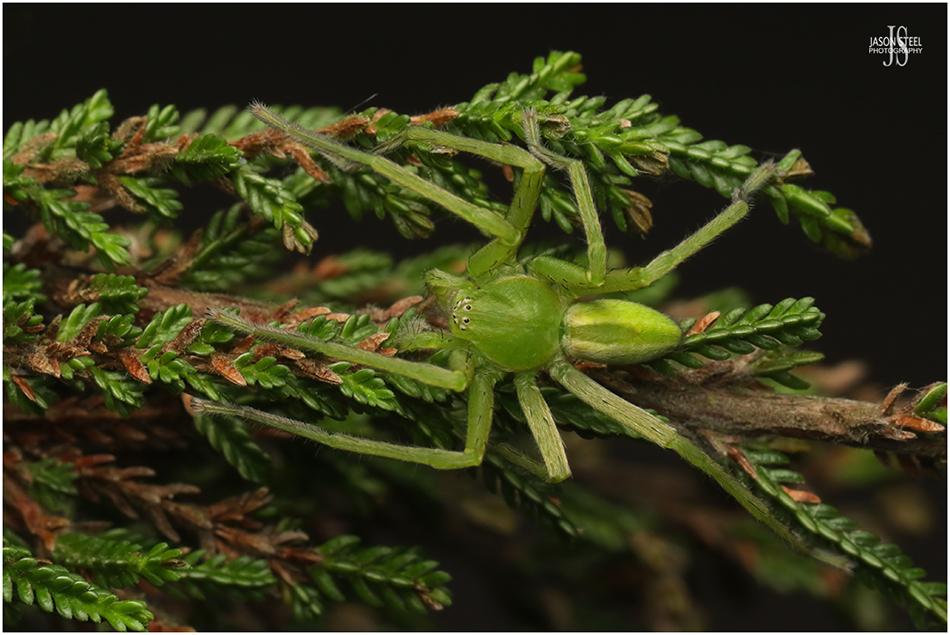
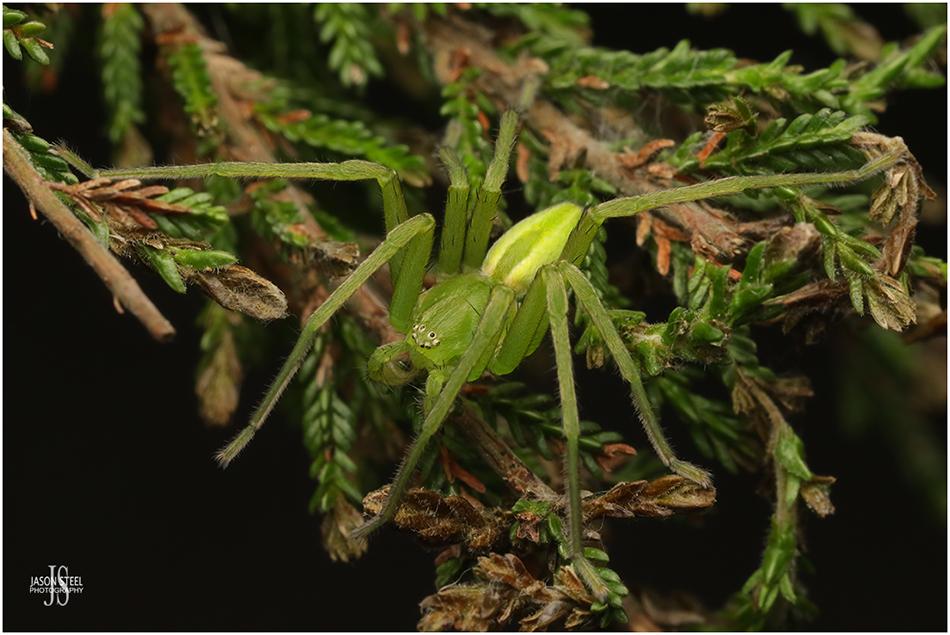
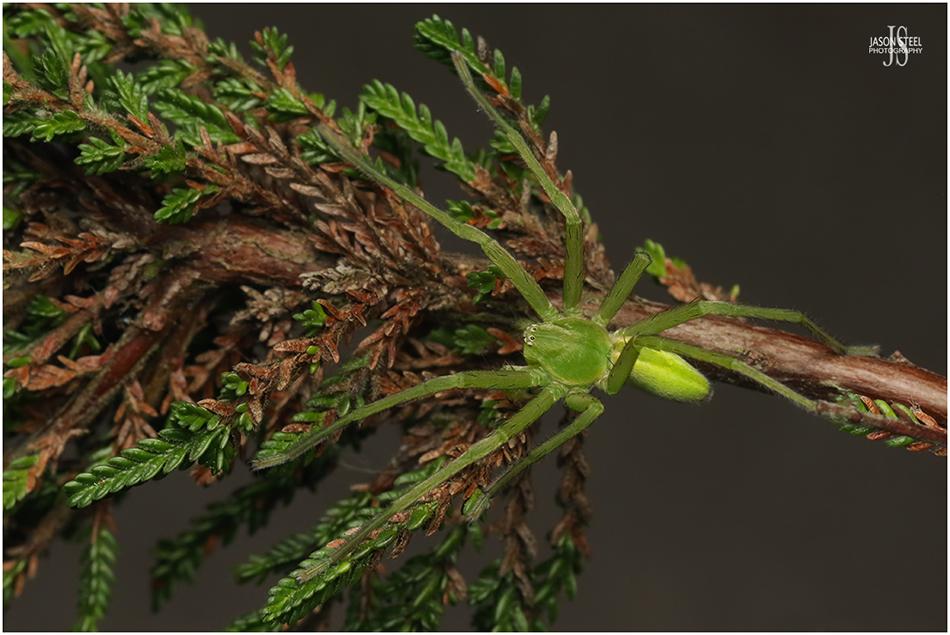
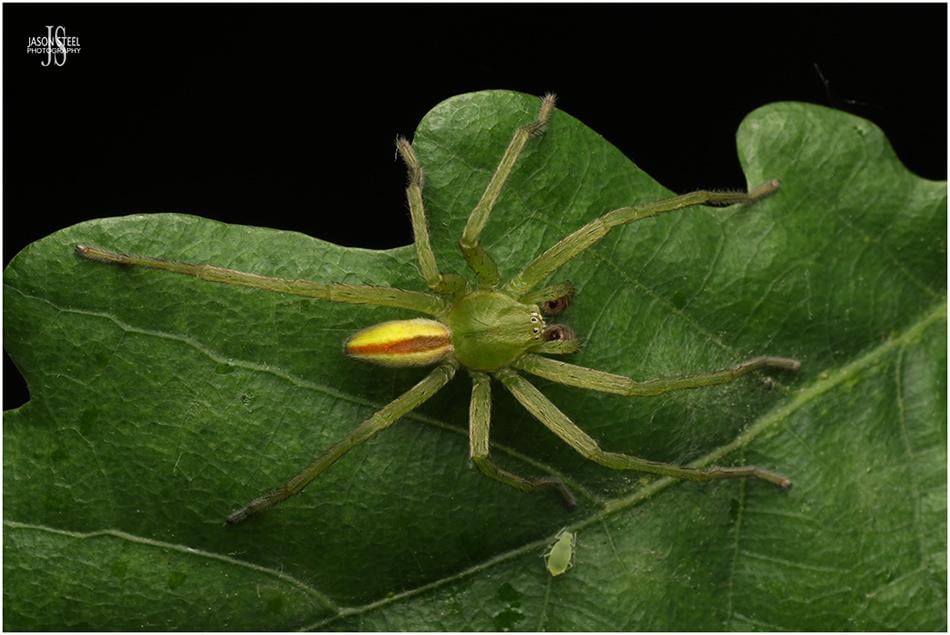
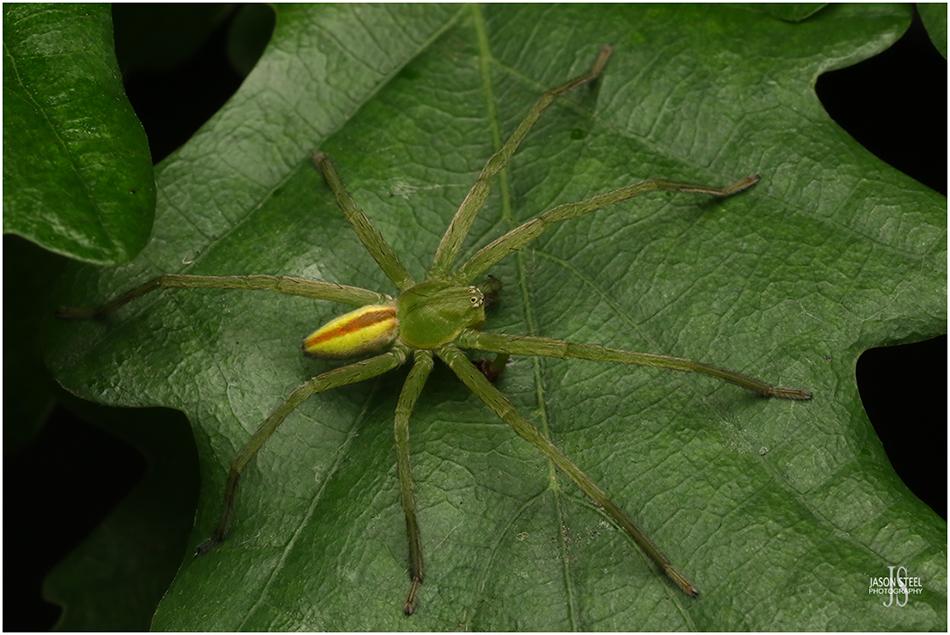
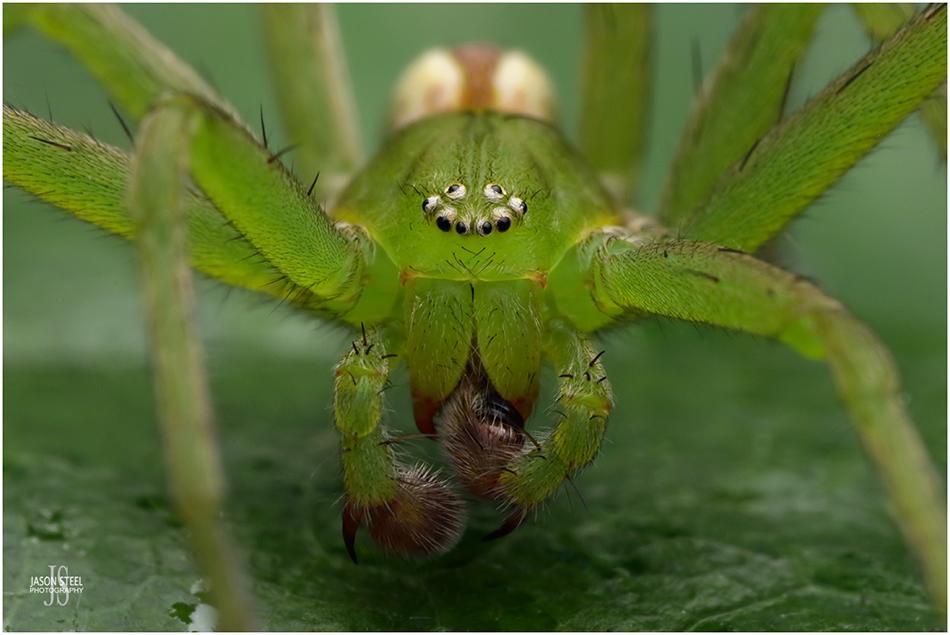
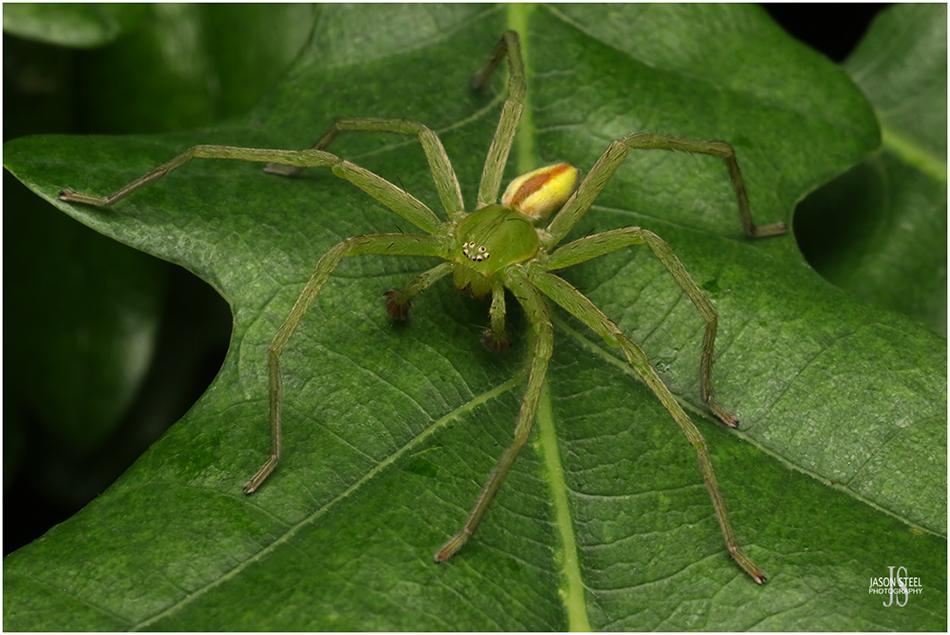
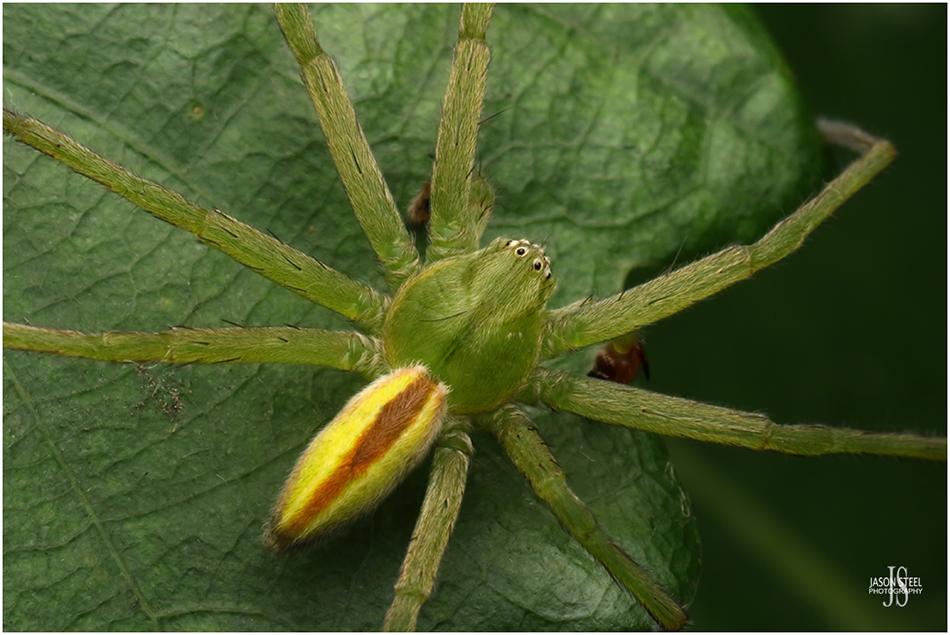
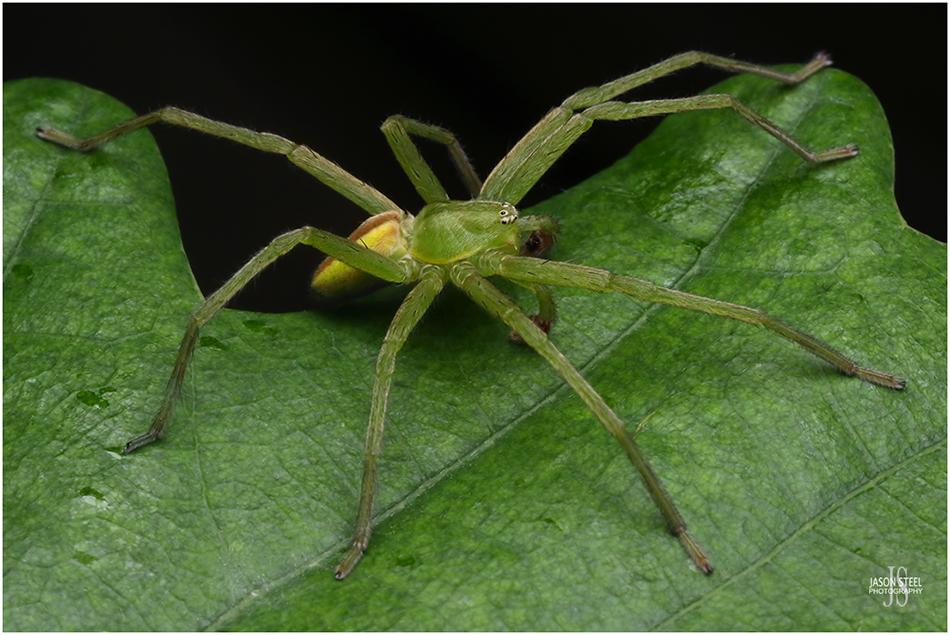
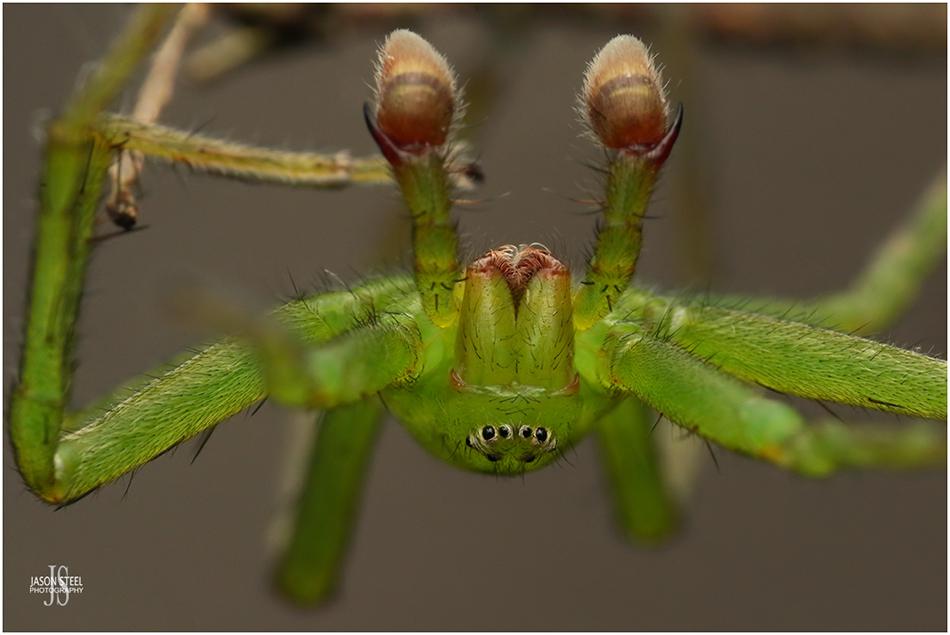
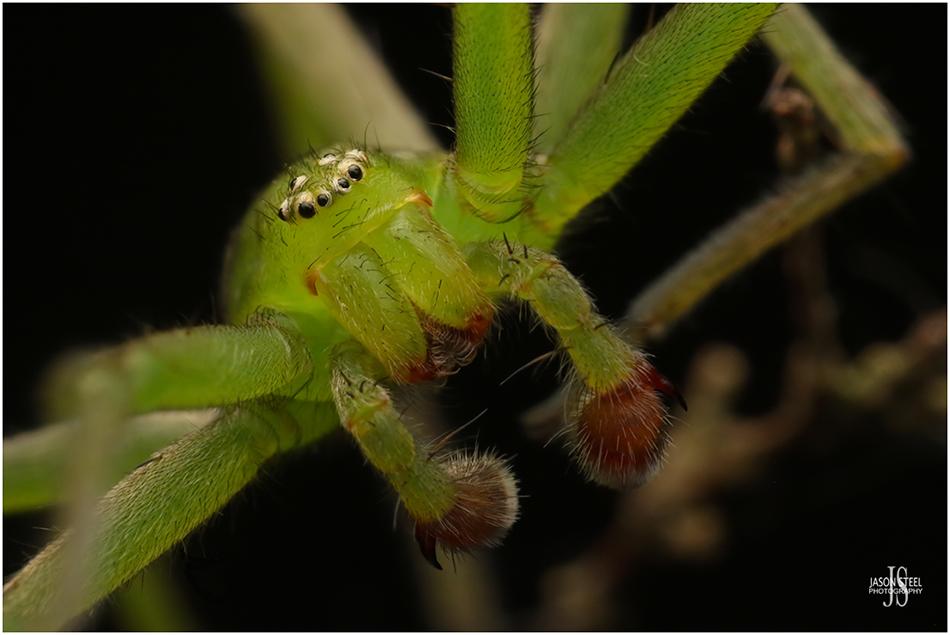
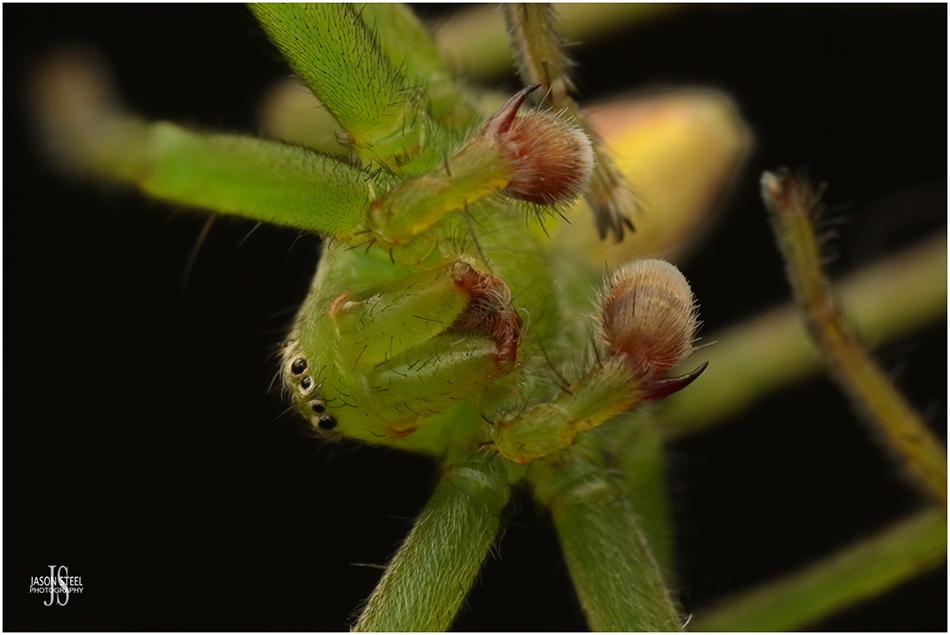
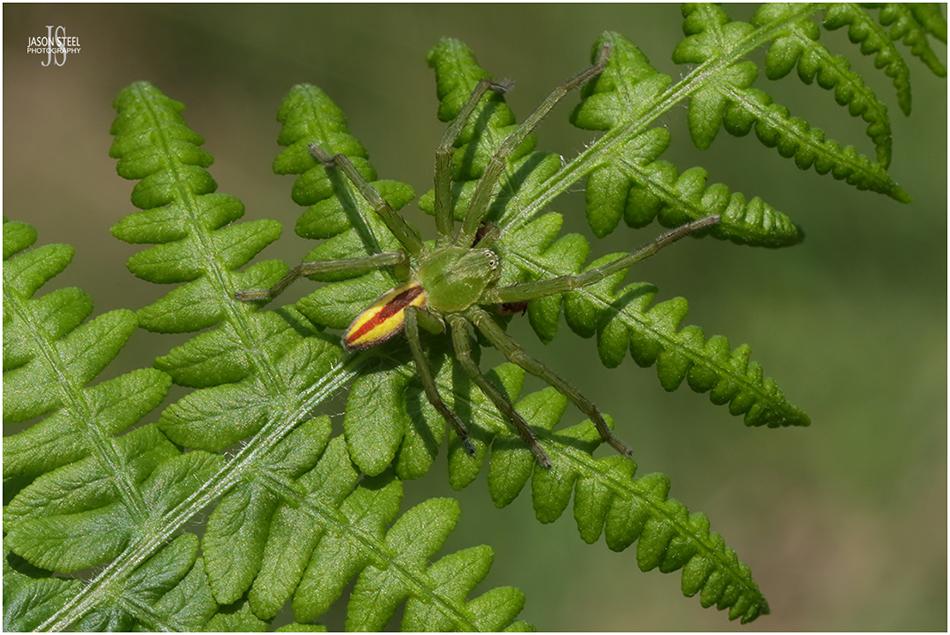

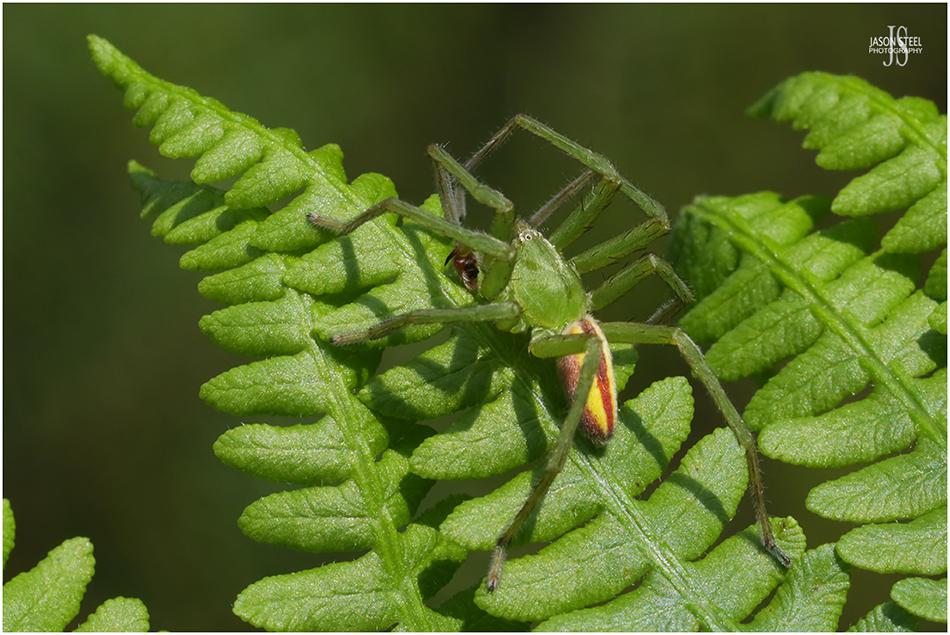
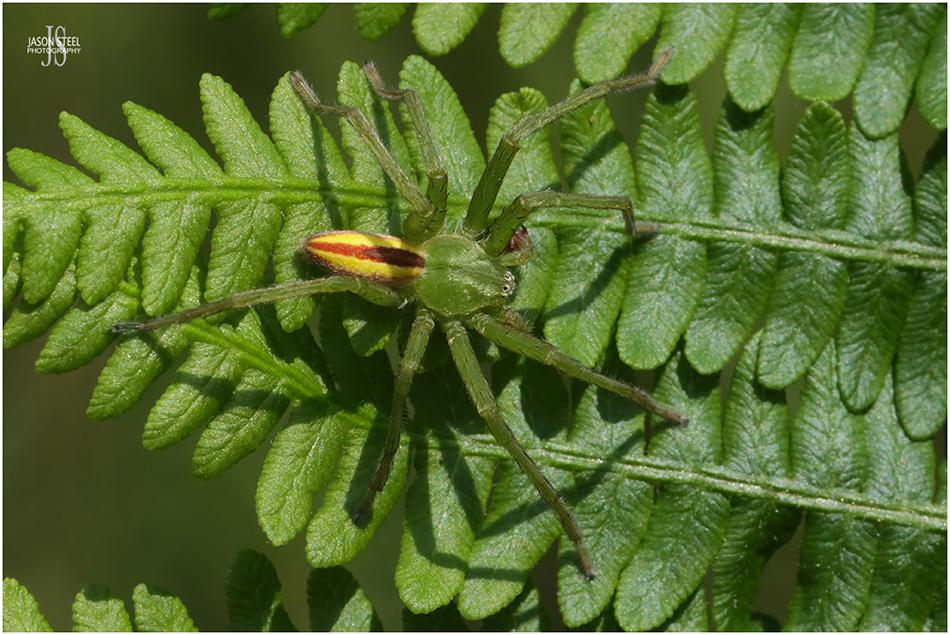
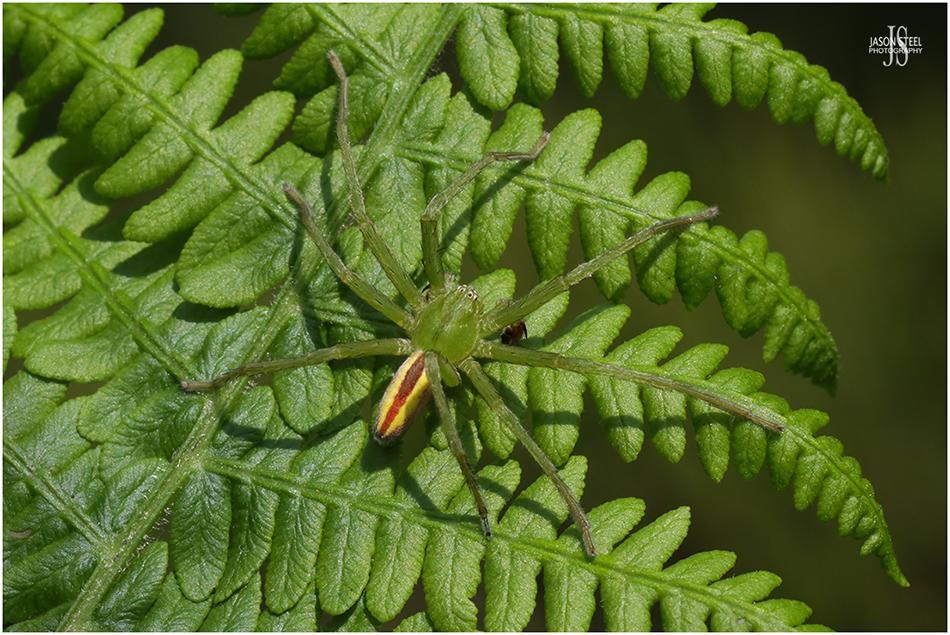
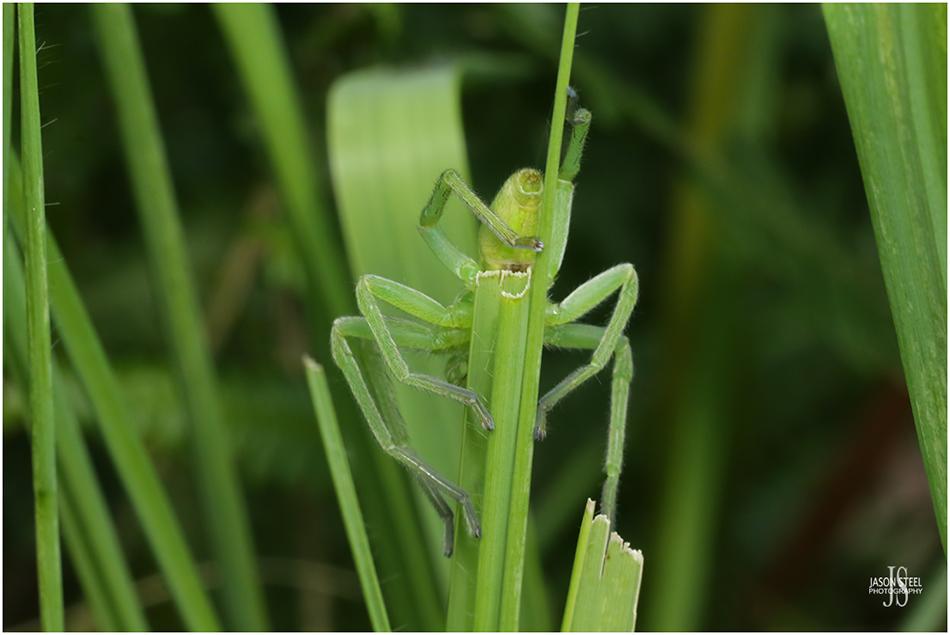
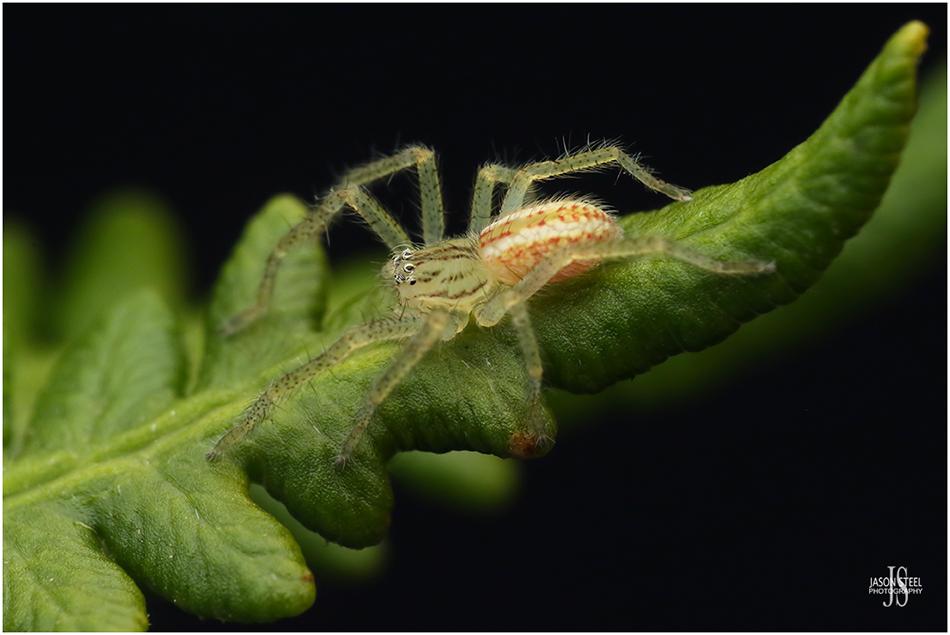
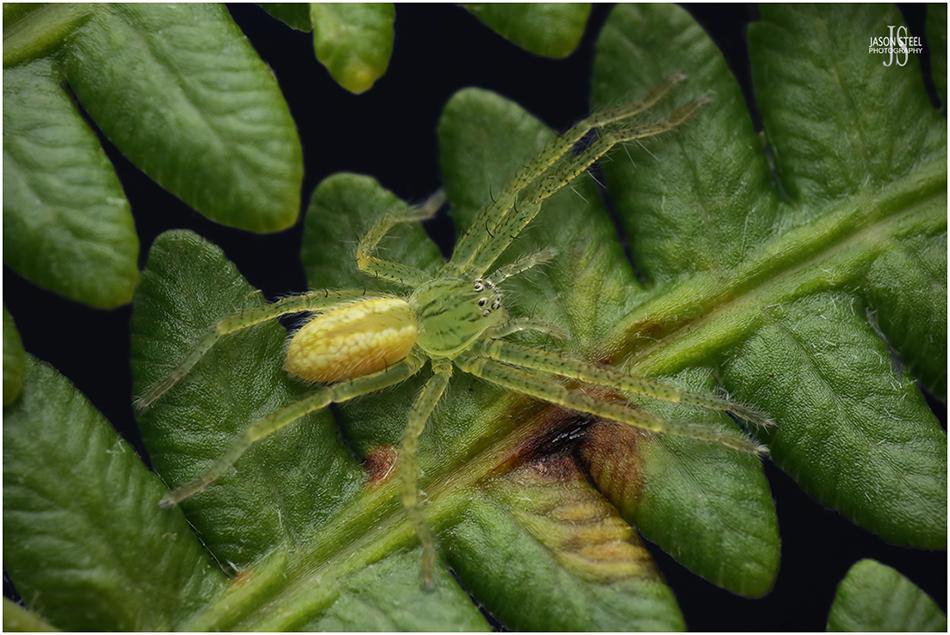
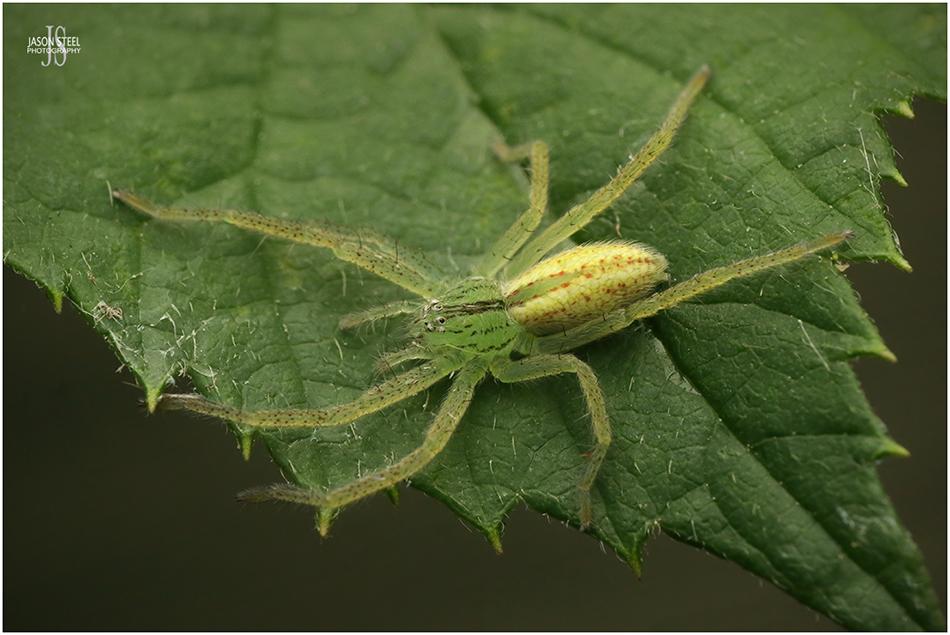
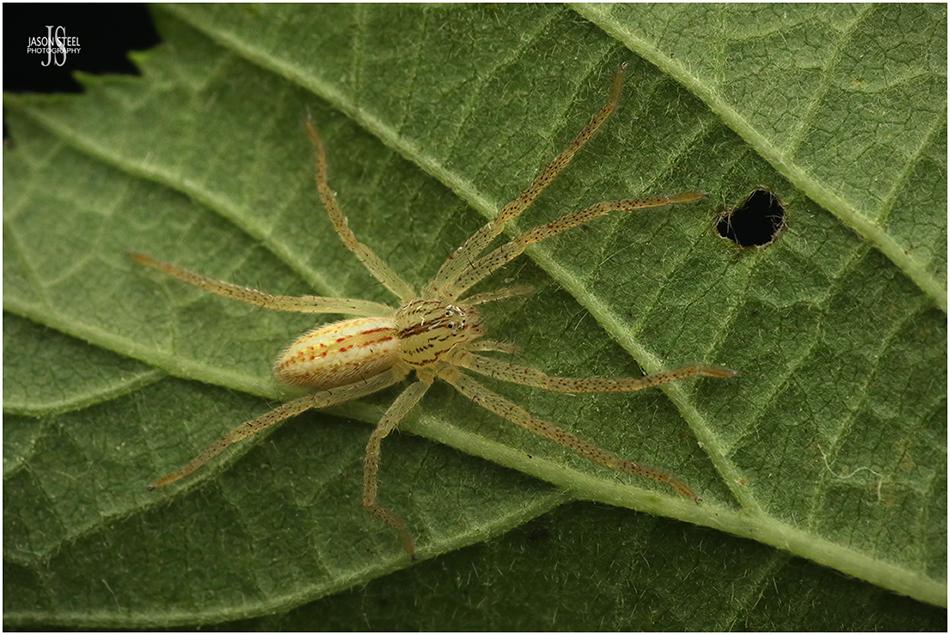
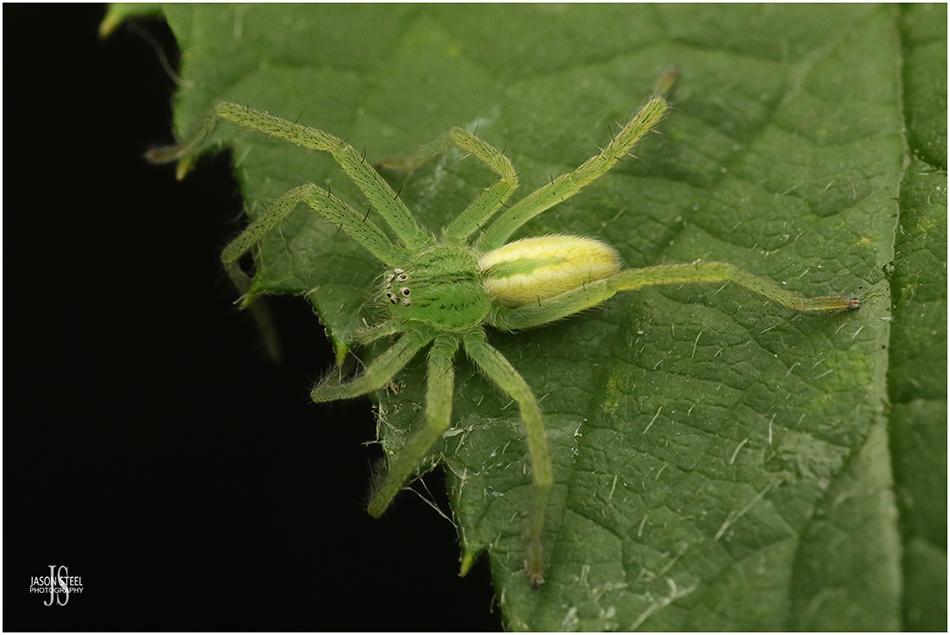
© All Photographs and text on this page are copyright protected and are the intellectual property of Jason Steel.
Photographs were taken using: Canon 7D mkII camera, Canon 100mm f/2.8L IS Macro lens with Raynox 250 attachment.